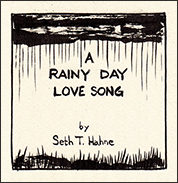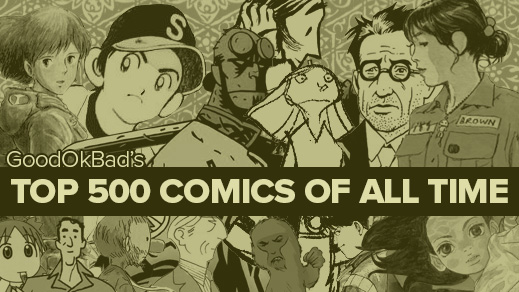

This is picks 201-300 of Good Ok Bad's Top 500 Graphic Novels Of All Time. Follow the links below to get elsewhere in the list.
201–210211–220221–230231–240241–250
251–260261–270271–280281–290291–300
My Best 500 Comics Of All Time (201-300)

Mister Blank
Christopher Hicks
152 pages
SLG
ISBN: B01N4HY7FJ (Amazon)
It's always a shame when a book falls between the cracks. When either the world isn't ready for it yet or its creator just hasn't had that magic string of luck that means their book will get the accolades and adulation. Every year I read ten or twenty books that ought to be famous, that ought to be among the books that everyone is talking about that year, but somehow just don't catch fire like they should.
Mister Blank is an old one of those. Published in its complete form in July of 2000, Hicks' adventure burst out just before the dawn of the new golden age of comics. There were greats that predated it by a year or two or were contemporaries, but the era of people looking to the graphic novel as a trustworthy source of great storytelling and literary wonder had yet to fully take root. Would Mister Blank find a great and robust audience were it released today? I've given up trying to predict what will catch hold of the popular imagination. When Balak, Sanlaville, and Vives' Lastman doesn't find itself prominent on every sci-fi/fantasy adventure reader's shelf, prognosticating a book's success seems a fool's errand.
At any rate, Mister Blank is 17 years old and out of print *but* unpopular enough that you can get used copies off Amazon in the neighbourhood of $15. Which is a steal. Because at the end of the day, Mister Blank is among my all-time favourite adventure comics. It's funny and exciting with dynamic art and a great sense of visual timing.
Story brief goes like this: Sam Smith is a nobody in a big corp. He loves his dog and has a crush on Julie but is too chicken to mention it, which is sad because she keeps waiting for him to make a move. Anyway, as we would expect, a couple terrorists try to blow up the corp building and Sam stops them. Only they were robots, not terrorists, and they weren't necessarily trying to blow up the building but they did accidentally drop some biomass that's cloned Sam and given a street mime superpowers. Also, there's a guy who flies because he might be related to Satan. Also a bunch of dudes who are immortal. Also is that Litlith, the first woman (the one before that upstart strumpet Eve), and oh yeah her daughter and does she know the word of creation that she stole from God? Maybe. Or probably. Because that's how stories about corporate peons always turn out.
Anyway. If you like fun, you should read it. Get it from the library or get it as a not-too-pricey used book somewhere.

Sparks
Lawrence Marvit
424 pages
SLG
ISBN: 0943151627 (Amazon)
Josephine, the book's protagonist/damsel in distress, is utterly human. She's sad and tragic and naive and wobegotten. And entirely likable. Every time she is snubbed, mocked, ignored, or abused, I am hurt. Josephine is one of those characters that you get to watch grow. She begins as timid geek-girl (she's an auto-hound) and slowly musters courage at the prompting of some dubious friendships. But courage needs to be earned and her initial attempts at freedom from her fears are only as successful as any halfhearted endeavor can be. And so, she needs to grow through the experience of pain and love and rejection and abandonment and love and death and terror and love. And love. And it's wonderful and I rejoice in her character and her victories.
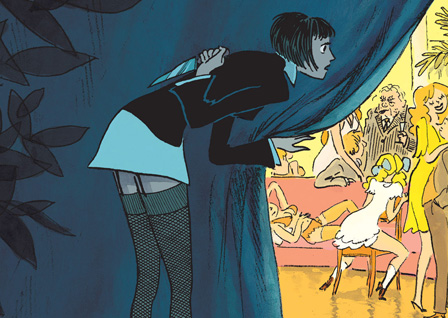
Miss Don't Touch Me
Hubert, Kerascoet
2 vols
NBM
ISBN: 1561638994 (Amazon)
Set around the turn of the 20th century, Miss Don’t Touch Me concerns two sisters (one a flirt and the other a prude), suburban dance parties, a serial killer, a brothel, and the dish best served cold. Reserved Blanche becomes accidental witness to the Butcher of the Dances, and her sister Agatha falls victim to the killer who hopes to cover his tracks. Blanche is destroyed emotionally but this devastation propels her into the journey of detection and subterfuge for which she’ll have to be steeled if she wants her revenge. Circumstances lead her into the employ of a brothel where her prudishness and refusal to be touched by a man lead her to become the shop’s special dominatrix. Dressed as an English maid, she whips, beats, and savages every single one of her clients, earning herself the title Miss Don’t-Touch-Me. Yet as she gets nearer to identifying the killer, she comes closer to falling into the killer’s path. It’s a treacherous road and the book functions well as French neo-noir.
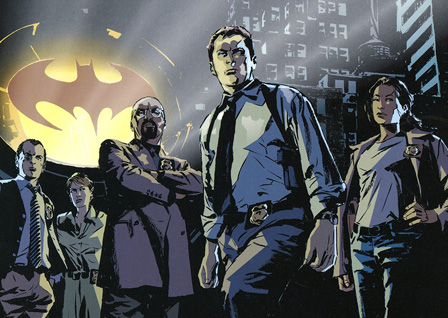
Gotham Central
Greg Rucka, Ed Brubaker, Michael Lark
5 vols
DC Comics
ISBN: 1401220371 (Amazon)
We pretty much all know by know that I am not at all a fan of Marvel/DC superheroes, right? Like, I think the structures of the genre and its market expression actively thwarts the emergence of decent storytelling and characters that matter at all. It's a bad scene. So much squandered potential, so sad.
BUT! There *are* occasional gems. Alias, Bendis's Daredevil, Langridge's Thor, Ultimate Spider-Man (to some extent), Simonson's Thor (to some extent). And Gotham Central.
Every character in Gotham Central, a book about precinct detectives in Batman’s Gotham, is at odds with the DC Universe. These are detectives trying to solve cases in a world where Batman can seemingly solve any crime so long as he’s given enough time (there is only one of him after all). So really, less than being the only way that families and loved ones can gain closure after a terrible crime, these detectives really just find themselves stuck in a sort of game of Cops and Batman. The goal of the game is of course to close cases before Batman does. The detectives pretty much rely on the fact that Batman will get the collar if they’re too lazy or too dense or too unlucky or too overmatched, so the book tends to play a lot on their frustrations with a game that is rarely tipped in their favour.
Of course, most of this is subtext and Rucka and Brubaker rarely get mired in that aspect of Gotham Central's world, but it’s always there, always present. And it goes a long way to explain these detectives’ short tempers and overtly competitive feeling toward Batman. They all seem well aware of the idea that were there more Batmen, they would all be obsolete, unnecessary relics of that brief period of law-enforcement history when there were no indefatigable costumed vigilantes.
And because this foundation of the story generally remains in the shadows—much like the Bat himself, only appearing at opportune moments to assert his presence and remind us of just whose city we’re visiting—Brubaker and Rucka are able to tell some just plain good crime stories without having to worry so much about heroes and villains. Of course Batman has to make his appearances and of course his rogue’s gallery is bound to take their part as well, but Gotham Central succeeds in keeping a lot of that noise off-screen, where we’re aware of its presence but can pretend alongside the detectives that its the normal people, the citizens, victims, and detectives who are the ones who matter.
It’s all part of the game and Rucka and Brubaker are happy to help us play along.
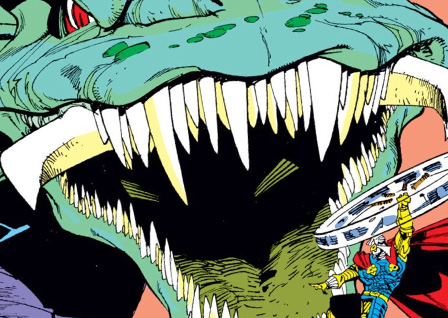
Thor by Walt Simonson
Walt Simonson
5 vols
Marvel
ISBN: 130290888X (Amazon)
Simonson’s writing is superb. The ideas that govern Marvel’s Thor are from another era and not in-line with the sensibilities of contemporary audiences. Simonson defeats this problem perhaps effortlessly (at least it seems so) by giving all his characters overly dramatic monologues, which they happily trade back and forth as if in dialogue. Their language is ludicrously flowery and their verbal ticks would be clownish if it weren’t for their identities as gods. Somehow all this over-writing works—the characters and their lives become fascinating and engaging, something worth the readers’ time to pursue.
One of the glories of Simonson’s run on the book is that the whole thing (nearly) reads as a single story. While that sort of thing happens much more often post-AD 2000, in the mid-’80s, such a long-running arc was pretty rare. The first chapter of this omnibus begins with a great and shadowy figure slamming down a tremendous flaming ingot (made from an exploded galaxy) onto an anvil. The sound that ingot produces as it makes first contact with the anvil is an ominous onomatopoeia that echoes across the universe: “DOOM!” It’s a famous image from the era and recurs throughout the work while this particular piece of Simonson’s saga works itself out. From there, story after story spins out, each the natural result of what came before. With few exceptions (and they seem to be publisher-mandated annoyances), nothing within the work stands alone.
Simonson also shows a wonderful knack for story beats. His narratives skip all over the place, with a page devoted to one character followed by two devoted to another followed by a half-page devoted to a third before returning to the first and then introducing a fourth. I’d say it was staggering to consider how he keeps so many narrative balls in the air while maintaining such a crisp story pace, but nowadays it seems like any number of worthwhile manga that hit American shores do the same. As well, Simonson seems happy to deliver several kick-ass moments per chapter—from charges against unbeatable foes to noble self-sacrifices to remembrances of those sacrifices to laugh-inducing come-uppances. Simonson the writer delivers.
But as much fun as Walt Simonson the writer is, it’s probably Walt Simonson the artist who most viscerally turns Thor into a hero whose songs we want to learn. Simonson himself is on art chores for the first two-thirds of the book and when he bows out to keep strictly to the writing aspect, the book is poorer for the loss. It’s not so much that Sal Buscema is a poor artist—it’s more just that he’s not Walt Simonson. (Simonson returns for the the big climax in the third-to-last chapter, and if that battle had been drawn by Buscema instead of Simonson, we’d be missing one of the greatest single chapters in comics history.) Simonson’s art is rough and tumble, full of a kind of visual braggadocio. He makes these gods look as if they might actually be warriors. His design sense reveals a kind of dynamism that was largely missing from the era in which he worked (and isn’t really apparent today either).
That I can unreservedly recommend this massive collection does not mean that there aren’t issues with the work. After Buscema takes over on art, it seems like some of Simonson’s writing spark wanes as well and I’ve always felt it difficult to be as invested in some of the latter stories. Another issue is due to a couple interruptive crossovers. In the aforementioned Power Pack crossover, the kids from Power Pack suddenly appear and are suddenly gone, and today’s readers will probably have no idea who they are or what place they have in Thor’s world. Even worse though, the primary McGuffin from Marvel’s Secret Wars miniseries shows up having resurrected one of Thor’s foes who had been killed earlier in the volume (the resurrection happens in another series and is not reproduced here). Later in the series, Thor gets shoehorned into participating in the X-Men event “The Mutant Massacre.” And in another instance, occupying three bare panels, a costumed supervillain is unceremoniously murdered by a homeless person; it’s part of the Scourge storyline running through Captain America’s book at the time, but doesn’t make any sense to readers without that kind of knowledge. These episodes are a shock to the system and a great argument against crossovers in the midst of ongoing stories. While the pagecount is already high, it would’ve been nice to have had some sort of explanation of these things—if this book is meant to be a kind of stand-alone omnibus.
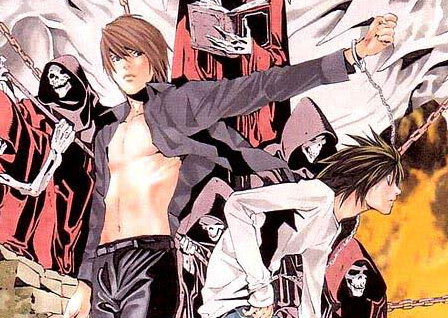
Death Note
Tsugumi Ohba, Takeshi Obata
13 vols
VIZ
ISBN: 142152581X (Amazon)
The fact that you’re reading about these very intelligent characters who think things through to incredible lengths only adds to the excitement. There were moments of revelation and counter-revelation that simply blew my mind. There are moments when you think the jig is up for one or more of the characters and then a flashback will reveal the would-be victim’s plan from the start and you get to see tables turn and over turn as these characters fight for their lives. In a way, it’s kind of a cheat, withholding essential information from the audience in order to up the tension ante, but the solutions are generally smart enough that most readers probably won’t mind being led on in this manner.

Spirit Circle
Satoshi Mizukami
6 vols
Seven Seas
ISBN: 1626926018 (Amazon)
With Spirit Circle, Lucifer And The Biscuit Hammer, and the recent anime Planet With, Mizukami proves himself reliably imaginative creator. Spirit Circle, despite being conceptually fascinating, may actually be the most mundane of his stories I've so far encountered. Two kids and their friends are somehow tied across lifetimes and continually reincarnate in intimate proximity to each other. The story begins as the new girl at the school proclaims that she is going to kill the protagonist. Because he is baffled, she provides him the means to investigate his past lives to discover why he must be murdered. The whole thing is a lot of fun and gets conceptually pretty wild by the end.
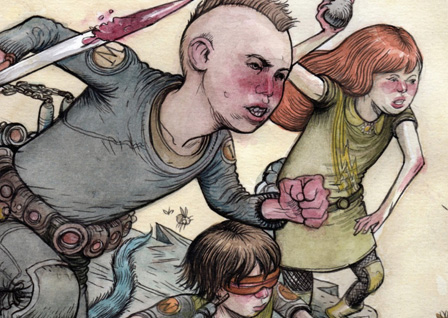
The Wrenchies
Farel Dalrymple
304 pages
First Second
ISBN: 159643421X (Amazon)
Wrenchies features that gorgeously janky Dalrymple visio-narratory aesthetic. It's a weird little book that isn't really all that weird after all. Lots of relatable motivation and heart.
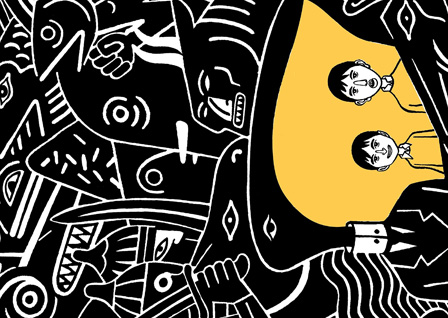
Epileptic
David B.
368 pages
Pantheon
ISBN: 0375714685 (Amazon)
I’ve known several people over the years who’ve suffered on and off (usually more off than on) from seizures of one sort or another. Fortune favouring me over them, I’ve never witnessed an episode and have only heard tales secondhand. I have however witnessed several faintings. The two are not really at all comparable save for the definitive theft of control from their victims. So while I’ve never witnessed an epileptic event, I am suitably horrified by the possibility.
Every person values control, and self-control above all. Children throw tantrums because they are denied control over a world that shuffles on heedless of their whims. Stereotypical mothers-in-law (and, I would hazard, all the other kind as well), bridle over the fact that another woman has usurped the office of responsibility for their son’s welfare. The lasting terror of rape is often described not as some revulsion for physical contact as such, but disgust or anger or horror at the abject violation of one’s right to control access to one’s physical self. Determinism and destiny are ideas that choke us on their callous disregard for what we want. Control is everything for us.
So it makes sense that David B’s recitation of life with a severely epileptic brother would stand as an unveiled monument to control. Control is the very thing that neither David nor Jean-Cristophe, the epileptic brother, possess. And in each their own way, they are desperate for it. After all, who wouldn’t be?
Jean-Christophe, the elder brother by two years, begins his rather-too-short battle with epilepsy when he is seven years old. He fights for a time, but quickly succumbs. Life without control is too hard on him. He gives in to the monster who’s been pursuing him and becomes a pathetic creature and burden to his family. He is never not human, but in the end it barely seems to matter. He is rage and sloth and mania. He cannot see control existing on any horizon and so he relinquishes entirely his hope in self-control to the end that he might become a burden on those who spawned him, exercising at the least a measure of control over the lives and schedules of his caretakers.
David, our Virgil on this descent into the heights of madness, is little better off than his brother. He is five when catastrophe hits his family with tidal force. The next fifteen years of his life are governed by his brother’s monster and his parents’ wild, grasping attempts to destroy it, or at least placate the beast. David is determined to fight and come out victorious. He will not give up control, even as it is wrested from his grip. He retreats to fantasy worlds, where he might gather strength enough to lay a siege in the real world. He makes his home among dreams and daytime imaginations, steeling himself against real monsters by governing those of his own creation. Fantasies being no match for the terrors of reality, he finally retreats to the last and weakest bastion of the truly defeated: a deep and abiding cynicism.
Epileptic, in many ways, is less the story of Jean-Christophe and more a cathartic journey by which David B can finally rid himself of his dreams, his fantasies, and his cynicism. And more than anything, it may be his way of finally exerting control over his life by coming to terms with the fact that he holds no control over such things and never will. It’s a powerful and compelling journey if one has the patience for it.
Epileptic is terrifying and needful, boring and important.

From Hell
Alan Moore, Eddie Campbell
576 pages
Top Shelf
ISBN: 0958578346 (Amazon)
From Hell alternates between being interesting and being soul-crushingly tedious—more often the latter. But (!) it remains for me Alan Moore's best and most ingenious work. I don't care for it but there's still something admirable about it as a project, and there are some chapters and pericopes that are just plain incredible. Like one told from the perspective of Gull's belly that charts his whole life story.
201–210211–220221–230231–240241–250
251–260261–270271–280281–290291–300
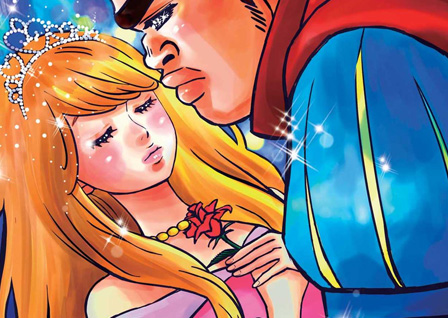
My Love Story
Kazune Kawahara
13 vols
VIZ
ISBN: 1421571447 (Amazon)
It took me a couple years to give My Love Story a shot. I wasn't taken with the art. It kept me from bothering with the series. But man, you guys, I loved this story. And the art gradually became rather charming to me. Earlier in this list, I highly recommended Horimiya, a wonderful progressive love story. I love Horimiya so much but if there's one part where it falls down a bit, it's with side character creep. Gradually as the series goes and new side characters join the book, we get less and less focus on the main couple, who are the reason why we're reading the story in the first place. My Love Story doesn't have that problem. This is about Takeo and Yamato from beginning to end—and any stories dealing with the side characters are there to serve the telling of the main story. It's refreshing to see such a single-minded pursuit of a story about a boy and his girlfriend. My Love Story is progressive romance (i.e. one that moves beyond the meet-cute and the will they/won't they question, exploring their life as an established couple and beyond). Takeo is a 6'6" muscular and forthright 15yo boy (who people mistake for an imposing and therefore creepy adult) and has had zero luck with the ladies despite being incredibly popular with the guys. Early in volume 1, he rescues Yamato from a groper on the train and after an initial confusion where Takeo thinks she's interested in his friend, they start dating. All this happens in the first half of vol 1. The rest of the 13 vols is exploration of their relationship given their personalities and insecurities. And it's kind of delightful. One other aspect I appreciated was the deep love between Takeo and his best friend Sunakawa. They care so much for each other and are deeply invested in each other's happiness. It was pretty beautiful to see. I got the whole thing from the library and binged it over the course of three days. I'd probably recommend taking more time with it than I gave.
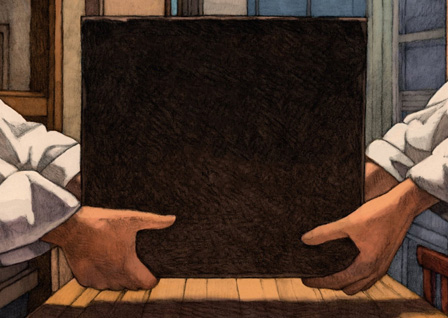
Shirley Jackson's "The Lottery"
Miles Hyman
160 pages
Hill and Wang
ISBN: 0809066505 (Amazon)
When you see, Oh look, some guy adapted another piece of classic American literature into the graphic novel form, and you think, Oh joy, what a waste of time—when that happens, 10 out of 10 times you're on the right track. Skepticism toward comics adaptations of great literature is well-founded and merited. The products produced are nearly always trash.
But not this time.
Shirley Jackson's story is dark, sinister, and impressive. But for me, as good as it is, it was always waiting for this: the moment when Jackson's own grandson would take his grandmother's signature work and draw the hell out of it, delivering this amazing thing that (for my money) actually improves on the original work. I don't understand his brand of witchcraft but I was awed. This is a gorgeous work, the illustrations lush and evocative. (Caveat: the lettering is a weakness.) I was delivered into Jackson's world like never before.

Princess Jellyfish
Akiko Higashimura
9 vols
Kodansha
ISBN: 1632362287 (Amazon)
Oh man Princess Jellyfish was a lot of fun. Higashimura takes a cast of characters I don't really like and lets them (most of them at any rate) charm me into enjoying their antics. Both my wife and I audibly laughed or chuckled our way through the series. And while at nine vols it feels a bit padded out (five probably would have been better), we both pretty thoroughly enjoyed our time in her world.

Peter Pan
Régis Loisel (translated by Nicolas Rossert)
336 pages
Soaring Penguin
ISBN: 1908030070 (Amazon)
In preparation for reviewing Régis Loisel’s Peter Pan, I thought it necessary to show due diligence by reading J.M. Barrie’s novel, Peter and Wendy. I’m glad I did. Not only is Barrie a fantastic writer with a grand taste for words (and the worlds their interplay can invoke), but I found the opportunity to have my conception of Pan entirely overturned. I, like too many others, have had my entire familiarity with the character dictated by the sanitized Disney product.
Most of us are familiar with Disney’s penchant for trimming and reframing classic stories into confections made palatable for audiences in the lowest common denoninator (in this particular case, terrified moralists). Under Disney’s pen, Hans Christian Anderson’s littlest mermaid does not lose her tongue, does not walk with excruciating pain, is not tempted to murder, and does not perish in the end. Disney’s Pinocchio does not kill the talking cricket at the beginning of the story. Victor Hugo’s finale doesn’t end in a litany of death with Disney at the helm. The stories of Cinderella, Snow White, Sleeping Beauty, Pocahontas, Aladdin—all paved over, gently landscaped, tidied, and made wholesomely presentable by the Disney company. Some of these stories survive their crisp evolution and become their own wonderful selves in a kind of cinematic afterlife. Others, like Peter Pan, fair less well. Not only does the story lose Barrie’s ingenious narration, the chief and principal joy of the book, but Pan’s character and world are eviscerated, losing all of the frightening terrifying heart that makes Barrie’s story so wonder-strikingly perfect. I’m actually somewhat upset at Disney for turning such a work of beauty into the anemic sort of innocuous adventure we find in their Peter Pan. Their version kept me from reading the original for more than three decades.
It’s fortunate that I had begun Peter and Wendy before embarking on Loisel’s journey with the character. Had I not, I would have been broadsided entirely by a crass, violent, sexist, and sexual vision of Peter Pan that stands strikingly at odds with Disney’s depiction. I would have chalked the book up as merely yet one more of the revisionist trend of reconceptualizing faerytales into dark, modernized treats for the Cynical Generation (shoutout to muh peeps). While reframing classic stories to be “more realistic” was cool for a while, it’s been done and redone and overdone so many times that it’s passed well into the realm of cliché by now. Adding to Disney’s sins, they almost had me believing that Loisel’s take on Peter was typically revisionist. But it’s not—not at all. Rather, it’s probably more properly viewed as devotional. It’d be counted fanfiction save for its production value and narrative strength.
Loisel’s origin story for Pan susses out so many of the terrible little deviancies that Barrie’s Peter and Wendy coyly includes. Barrie’s story took place in a world of violence and sex and anger and depravity, but Barrie consciously told his tale in a manner fitting for young listeners. It’s a deeply whimsical work, subversive in how baldly it glosses the depravities at stake in Peter’s world. Via Peter and Wendy, we find numerous dark surprises. Peter kills off Lost Boys as they grow too old for his taste. The Redskins are naked save for a decoration of scalps, some belonging to the Pirates, some belonging to Lost Boys, and their chief is so thoroughly overburdened with such decorations that he has difficulty sneaking. Tinker Bell conspires to have Wendy assassinated by a Lost Boy (with an arrow to the chest) and is successful until it is revealed that a bare chance caused the arrow to glance from her heart. Tinker Bell is portrayed as a bit of the sexpot, endowed with a generous bosom and wearing a scant leaf as a dress in order to best show off her figure. The faeries are a randy bunch and given to orgies. Peter has a fondness for meting out mortal violence. Barrie recounts that Peter will come home with stories of great adventures—only in the light of day no body can be found; at other times he will come home with no story at all—yet come daylight, we find a corpse in plain sight. Hook routinely murders his crew members for various slights and perceived slights. In Wendy, John, and Michael’s flight from London to Neverland, the journey is so long that Michael falls asleep and plunges from the air toward death in the waves below; Peter dives and rescues him spectacularly at the last moment, but Wendy suspects that Peter is indifferent to the saving of Michael’s life and wouldn’t have bothered save for the fact that he could look heroic doing it. Neverland drains its inhabitants of their memories and so Wendy and the boys begin to forget their former lives, but Peter, who’s been there longest, has no memory of his former life nor of many other things. Wendy continually must remind Peter of who she is. When Tinker Bell finally dies, Peter quickly forgets that she ever existed.
Had I not discovered that this was the character and realm that Loisel needed to build toward, I would not have been able to understand his work for what it is. Loisel’s Peter is not yet the Pan that Barrie would reveal to the world, but he’s on his way—and unlike Barrie, Loisel does not have any reason to hold back the grim clouds inherent in Peter’s tale. Barrie’s story is a gathering of light in a world of profane darkness; Loisel’s is the story that justifies Barrie’s requirement of light. To that end, Loisel crafts a visual narrative that capitalizes on an adult readership—and the grown-ups (parents, uncles, aunts, grandparents, and teachers) who take the time to investigate Loisel’s Peter Pan will find themselves at a place to better understand Barrie’s original, as well as the profound need for Barrie’s steadied voice from within that maelstrom.
While Barrie’s Peter is grounded in Edwardian England, this prequel is founded a quarter-century earlier in a Victorian London more reminiscent of the filthy streets of Dickens than the drawing-room comedies of Oscar Wilde. Loisel’s London is dirty and sinister, on the cusp of reeling under the terrible shadow of the Ripper. The city is rife with whores and pedophiles and thieves and drunks. It’s a world of foul deeds and befouled hearts. And it’s here that we first find Peter, not quite fortunate enough to be an orphan. Through six meaty chapters Loisel helps Peter divest himself of his memory, his person, his humanity—all to the end that he might become Barrie’s eternal child-monster.

Yukiko's Spinach
Frédéric Boilet
144 pages
Fanfare/Ponent Mon
ISBN: 8493309346 (Amazon)
Autobiography is by its nature one of the more conceited art forms. Concocting a story of one’s own adventures to the end that they will be enjoyed by a readership of more than one’s own friends and family takes a fair amount of self-confidence. Or hubris. Or arrogance. To imagine that one’s own story is as valuable a use of a reader’s time as a fictional character’s takes guts. Or moxie. Or chutzpah. And then for an author to specially select for his autobiographical pericope a couple months’ dalliance with a young woman and detail his own skill as an adventurous lover—what does that take?
Frédéric Boilet’s apparently autobiographical* Yukiko’s Spinach is part journal, part intimate recountment of a two-month-long interlude with a girl he meets at a gallery opening in Japan. So far as romances go, we learn from the start that this one is probably doomed to a brief lifespan since Yukiko, the object of Boilet’s interest, is herself interested in someone else and will pursue that entanglement as soon as opportunity allows. It’s in the meanwhile that she’s willing to engage Boilet (or his autobiographical avatar) in some fitful and adventurous physical pairings, necessarily accelerating the evolution of their relationship at unnatural speeds towards its foreseeable culmination.
As a book primarily interested in Yukiko’s temporary place as Boilet’s carnal muse, the book amusingly (from a very meta perspective) goes to deliberate lengths to demonstrate Boilet’s part as a persistent, attentive lover. Whether absolutely non-fictional in this aspect or not, Boilet posits a version of himself that is a kind of indefatigable superman of the intimate. In the midst of their congress, he lingers over every part of Yukiko’s form, making each portion of her body a new standard of beauty, even to the point of remolding imperfection (such as chicken pox scars) into aesthetic wonders. He turns every private moment into an opportunity to once more ravish his lover, disrobing her even as she dresses from their most recent congress.
Yukiko’s Spinach exists as a revelry in a moment, a snapshot of the perfect vacation marred only by the inevitable collapse and loss at its conclusion. As autobiography, one wonders what Boilet was trying to communicate to himself—for memoir as often speaks some truth to the author as it does to the reader. If he seems somewhat set adrift (exemplified by the transient nature of his dalliances), perhaps that is a reflection of his status as a resident foreigner. He’s clearly looking for stability but simultaneously doesn’t seem to rely on its attainability. Boilet’s character seems a man trapped in flux. It’s an interesting place for a protagonist to be and most of us could probably relate on some level from at least one moment in our lives.
One of the standout praises Yukiko’s Spinach will receive almost across the board is in regard to its artistic vision. The reader sees the story unfold almost entirely in the first person. The camera through which we encounter Boilet’s experience with Yukiko is, for the most part, lodged in Boilet’s own eyes. It’s a curious technique and we are treated to a man with a perspective that roams over the entirety of his surroundings, rarely meeting Yukiko’s gaze eye-to-eye. Through this scattering of vision, Boilet unveils a character that might otherwise remain unknown. His avatar is made real by his evident distractions.
With its rugged and frank sex scenes, Boilet’s book will not be appropriate for some readers and may put off others. Personally, I did not find the book (for all its explicitness) erotic. Perhaps it was the documentary nature of the thing or its surreal first-person presence, but I felt that Yukiko’s Spinach was more an anatomy of a relationship than a lush and purposed turn-on for those in search of a sensual thrill.
*note: It does occur to me that this may not actually be autobiography, that it may instead be some kind of hyperfictionalization of Boilet’s experiences—a kind of codified wishful thinking on the author’s part. While that would certainly complicate the reading, I think it would make for a more delectable interpretive puzzle.
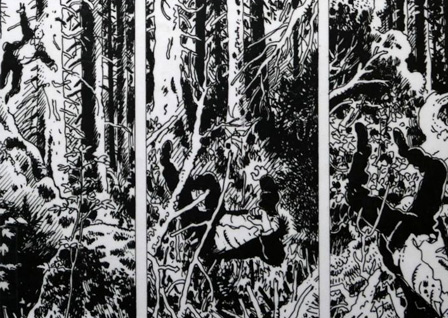
West Coast Blues
Jacques Tardi (adapted from Jean-Patrick Manchette)
80 pages
Fantagraphics
ISBN: 1606992953 (Amazon)
If you like crime novels, you'll want to get ahold of this adaptation of 1976's Le Petit Bleu De La Côte Ouest. Tardi's illustrations under Manchette's delightfully succinct, incisive, and spare narration is a wonder. It's short at 80 pages but those pages are full-to-brim with content. West Coast Blues sits in my top 5 favourite crime graphic novels.
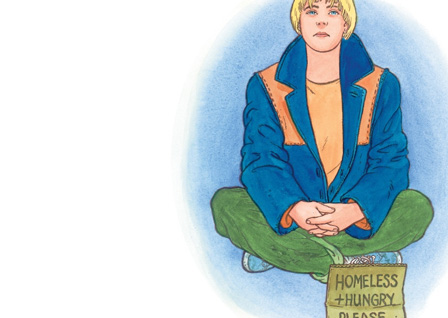
The Tale Of One Bad Rat
Bryan Talbot
136 pages
Titan
ISBN: 1852866896 (Amazon)
The Tale of One Bad Rat is one of those classics of the medium, one of those books that was an indelible footnote in the quest to prove that comics could be about more than just superheroes and melodrama. Whether Bryan Talbot’s intent or not, One Bad Rat became one of the arguments for comics being a medium of communication worth the same level of serious consideration as literature. Or if not literature, then at least the same sober reflection that cinema could garner. In a way, that’s kind of an unfair burden to saddle upon this slim graphic novella. One Bad Rat does two things for the medium. It presents a serious issue in a dramatically plausible way and it incorporates literary allusion in a largely worthwhile manner.
Young and homeless teen protagonist Helen plays refugee from two abusive parents, trying to muddle her way through a world that cannot make sense to a mind scarred so early and deeply by counterfeit love. Over the book’s first half, Talbot offers an empathetic look at how life outside of a home might play out. It’s a heavy read, though not so heartbreaking as it could be, largely because Talbot keeps the real problem off-screen and unspoken for most of the journey. Certainly there are allusions to the sinister throughout, but the true horror of her situation is never laid out gratuitously.
Beyond this, Talbot not only makes Helen an ardent fan of Beatrix Potter (her life and works), but skillfully uses that character-interest to build his story. Helen sees things in Potter-esque terms. For much of the second half of the Tale, she is accompanied by a human-sized rat, functioning as silent confidant. That Helen would grasp onto Potter’s history and millieu so strongly makes good sense in the world of Talbot’s telling and it gives one the sense that One Bad Rat is something more than just one more trite examination of abuse. Beatrix Potter becomes a talisman for Helen, one by which she hopes to find the strength to grow beyond her terrible past.

Hilda
Luke Pearson
5 vols
Nobrow
ISBN: 1909263141 (Amazon)
What began in Hildafolk (later retitled Hilda And The Troll) as a kind of queer story about a young girl and her love of faerylore that was almost certainly meant for grown up readers has become one of the greatest series of graphic novels aimed probably at young readers and grown-ups who like faery stories.
In the beginning, Hilda and he mother live in the hills near to nature and near to supernature. There are trolls and elves and giants and men made of wood. Hilda adores them and the adventure they represent. The first volume explores her conflict with a stone troll. The next involves tiny invisible people and giants as tall as mountians. In the third, she and her mother have moved to the city and Hilda finds that even in the stifle of civilization, magical creatures thrive and survive. And it continues.
The Hilda books are about finding wonder in the wonderful, but also focus on Hilda's relationship with her mother who often doesn't know quite what to make of her daughter's free and wandering spirit but simultaneously doesn't want to squelch the life in the one she loves. It's a wonderful series and I'm glad Pearson has continued them.

Venice
Jiro Taniguchi
128 pages
Fanfare/Ponent Mon
ISBN: 1912097044 (Amazon)
So Louis Vuitton hires these artists to do travel books for them, basically a carnet de voyage. They'll get ahold of an artist and send him or her to a location they've never been before and the get back a book of paintings of that place, which they'll then publish in a pricey little art book. Lovely stuff, nice for coffee tables. They tapped Taniguchi for the series a number of years ago and as Taniguchi does, he turned it into a narrative about, surprise, a man wandering around Venice taking in the sights.
Here's a 4-minute video of Taniguchi talking about the project:
The frame is that the man found among his deceased mother's things a lacquer box filled with photos and some small watercolours from Venice a long time ago. In the photos are a young woman (his grandmother?) and a child (his mother?), and occasionally, a young man (his grandfather?). As he travels around Venice he tries to match up locations with the photos and the watercolours—and along the way hopes to get some better sense of his family and their history. The narrative is slight but affecting. The real draw, however, is Taniguchi's gorgeous paintings of the city. Some are good, some are beautiful, and some are awestriking.
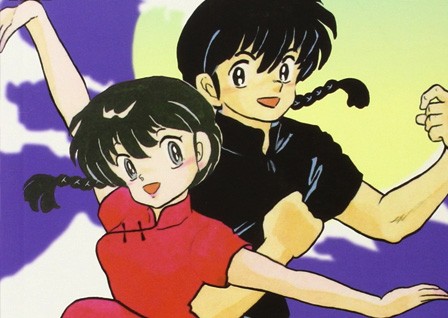
Ranma 1/2
Rumiko Takahashi
26 vols
VIZ
ISBN: 1421565943 (Amazon)
Ranma 1/2 is, sort of, just an amusing trifle. You can hang around for a little or you can linger and take in the whole thing. It probably doesn't matter, but as long as you're reading you're probably also having fun. Takahashi keeps things lively even when the will they/won't they question of the book's principle ship has long lost its luster.
201–210211–220221–230231–240241–250
251–260261–270271–280281–290291–300
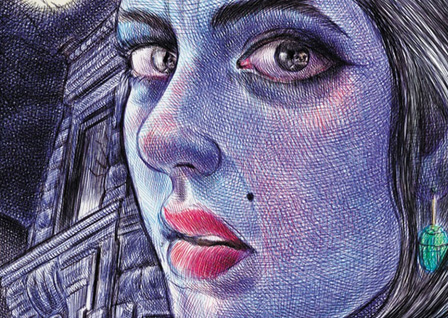
My Favorite Thing Is Monsters
Emil Ferris
2 vols
Fantagraphics
ISBN: 1606999591 (Amazon)
My Favorite Thing Is Monsters does some things very very well. The use of ballpoint pens (or possibly pen-emulating digital brushes) is awesome. Ferris' use of colour here is almost incredible. As well, the bouncing around of the narrative and the discrete release of revelations works very well.
On the other side, page and panel flow can be awkward and often enough I gave up trying to guess in which order I was meant to approach text blocks and balloons.
As well, I struggle to buy that the narrator/artist is ten years old; there's things that feel like discrepancies (I guess) where she's handing out Valentine cards in class (a pretty ten-year-old thing to do) but then a week later being threatened with actual penile penetration by classmates. Maybe that does happens in fifth grade (!?) but I know I wouldn't have had the physical development required to have sex with anyone back then, and I was old for my grade.
But this discrepancy may be intentional. Karen from the first proves that she has an overactive imagination that she is full-well ready to believe as fact, so maybe that will play a role. It could be that Karen really is in high school or something and is only portraying herself younger for reasons to be revealed. (She depicts Franklin as a classmate in the Valentine's scene, but he looks Much older than 10yo in later scenes.) Also, Sandy probably doesn't actually exist.
I am hungry for vol 2 to see how this whole terrible circumstance is resolved and to see whether this will be a great work or merely a good one.

Beverly
Nick Drnaso
136 pages
Drawn & Quarterly
ISBN: 1770462252 (Amazon)
Beverly is kind of like Killing & Dying—only it didn't annoy me.
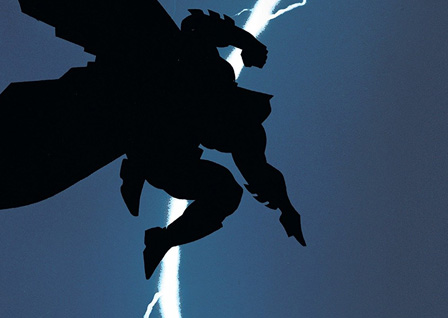
The Dark Knight Returns
Frank Miller and Klaus Janson (coloured by Lynn Varley)
224 pages
DC Comics
ISBN: 1401263119 (Amazon)
This one is here largely because of its importance to the history and development of the form in the US. For what it is—a yarn in the superhero genre and one dating to 1986—it's an incredible piece of work. It would be more astounding had it been the first time Miller has hit the scene, but he'd been knocking around for a while at this point and you could see DKR's formal tics present in Daredevil and Ronin. But this may be where he best put his aesthetic into practice for a wide audience (what normie was reading Ronin, after all). Addd to that he made Batman actually feel dangerous and a little psychotic, and you can see why (in a world where Batman's otherwise most pop-accessible appearances were in the Adam West television show and the animated Superfriends) this would have been such a kick in the pants for the franchise. Batman Year One downplayed the silliness of the character (though it was still present) and focused on badass Batman; Dark Knight Returns marries camp and badass in such a way that readers can easily forget that they're reading an absurd, campy Batman story. Miller dances this line really well, and dances it well possibly for the last time in his career (everything afterward that I've seen feels like parody). And it really is a pretty book—despite being so dirty and grime-splattered.
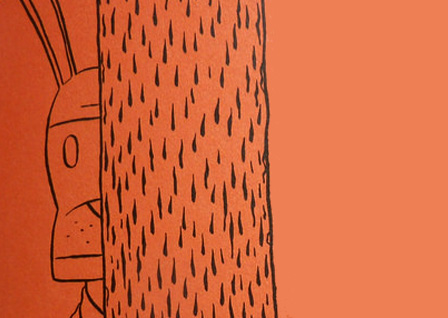
The Iron Wagon
Jason
272 pages
Fantagraphics
ISBN: 160699414X (Amazon)
A neat adaptation of a Norwegian murder mystery. Jason picks the right stuff to show and the book feels satisfying even if the mystery itself contains several kind of ridiculous elements.
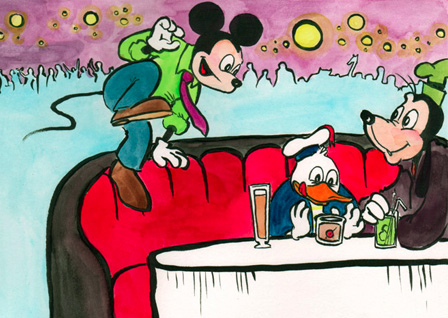
Boys' Night
Max Landis and AP Quach
29 pages
Self-published
Read here
Boy's Night posits a middle-aged Mickey, Donald, Goofy, Minnie, Daisy, etc. It would be easy to mistake the story for something cynical. It's not, but at a glance it might look that way.
Boy's Night is real. It's about what happens to the idols in the cult of celebrity once the sheen is gone. What happens to the souls that have been plastered over for so long that the reality and realness of the lives behind the facade become difficult to even recognize.
Boy's Night is a touch mean-spirited but simultaneously tender. And it's about what it's like to be human in a world beyond our control. The trajectory is made rare by the injection of celebrity, but the story beats and thematic notes are the everyday. Humdrum and mundane.
The comic may look a bit crunchy but it's a real achievement.

Watchmen
Alan Moore and Dave Gibbons
448 pages
DC Comics
ISBN: 1401245250 (Amazon)
Watchmen is important to the history of the medium. And formally, it's brilliant. Moore is meticulous in how he plans his pages, his story, his ordo apocalypsis. And I really do like the pirate parts. But like pretty much everything I've read from Moore, he's more interested in that meticulousness than in pushing me to invest in his characters as anything more than story props. Because of this, despite all the ways in which Watchmen is genius, it also remains largely emotionally inert—a sort of dead thing. It's a good book, but not one that I like, not one I care to read again (four times is enough for me) while so many other books go unread. But hey, I am in the distinct minority on this and so you should probably give it a shot if you haven't already. Of course, if you read it and didn't really enjoy it, don't worry about it and don't feel you need to force yourself. I'm here to validate you.
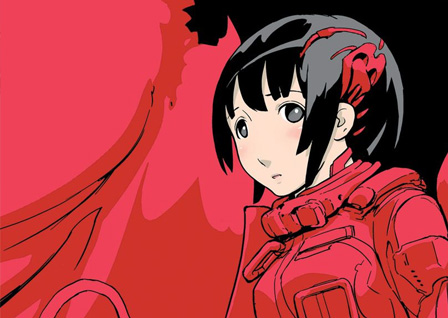
Knights Of Sidonia
Tsutomu Nihei
15 vols
Vertical
ISBN: 1935654802 (Amazon)
With Blame and Biomega, Nihei showed himself master of the bizarre and compelling. These are books that make you go Wow. With Knights Of Sidonia he dialed all of that waaaaaaay back, crafting instead a rather straightforward (even if evolving) space adventure storyset in a far-off future. Nihei is still wildly inventive, only here he's constrained himself to playing within range of his tropes' boundaries.
The gist: Humanity's been on the run from a bizarre alien species for a mckenna years or so on a giant spaceship (think the SDF-1 from Robotech, if you can remember that far or have been adventurous with your Netflix usage). There are the civilians, the crew, and the immortal crew (who've undergone genetic tampering in order to live pretty much forever, barring catastrophic interference ...like guns). Nagate is the clone of an immortal, invincible pilot from 500 years ago, only his "father" hid him away from society for fatherly reasons and he's only just now rejoining the world. And, as they say, he's got a lot to learn before he's ready to save anybody.
He meets and hangs out with and eventually impresses a lot of women: the ship's immortal captain, the currently genetically-sexless-but-give-her-time pilot cadet, the sister of the woman who died on Nagate's first mission, a talking bear with a robot hand, the ace pilot, the clone sisters, the AI, the alien hybrid genetic daughter of his former almost lover, etc. Knights Of Sidonia is always on the verge of threatening to become a harem manga, but Nagate's complete disinterest in forging romantic relationships and his complete interest in eating and flying mechas subverts what could just be boring business-as-usual.
I'm not specially interested in mecha, but Knights of Sidonia, with its focus on the relationships between its characters and the enjoyable soft-use of hard sci-fi concepts, remains a favourite. It moves between epic spectacle and post-contemporary oblivious harem.
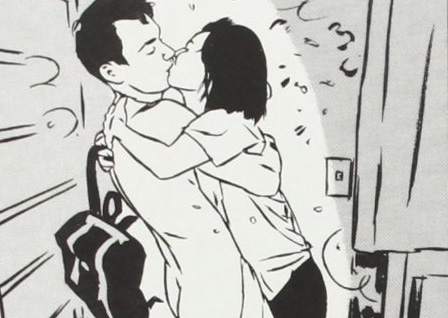
Tokyo Is My Garden
Jiro Taniguchi
152 pages
Ponent Mon
ISBN: 8496427072 (Amazon)
Life is grand for David Martin, Tokyo Is My Garden's protagonist. The people he works with at a fish market shout out his name in welcome. He wows Tokyoites with a knowledge of kanji that is daunting even to natives. He knows where all the best night spots are. And though he might have just been thrown out of his girlfriend’s apartment (she was a model), he’s quickly picked up a new one (a slick business professional who might as well be a model). He may have troubles, but none of them have to do with his reception by the people of Japan.
Playing to type, David’s one constant thorn relates to his own native land. Generally, the Westerner who dreams of exotic success in Japan is someone whose life in the West isn’t panning out glamourously. It’s like the kind of dorky kid in junior high who’s not even in the running for being considered popular—he imagines that if he’d only move to a new school, that’d be his big chance to rewrite his fortunes. When that kid grows up a little, he’ll recognize that just changing schools isn’t enough. He’ll need to go somewhere where his novelty won’t wear off in the space of a single day. He’ll need to go somewhere where he’ll naturally stand out. And if he’s white, then Japan is a natural destination candidate. Sure, he could go to Kenya, but he’s a little bit uncomfortable with all those black people. He could go to Peru, but he doesn’t remember seeing any Peruvian comics that go out of their way to show off teenagers’ panties, so… Japan it is. I mean, fraught with biases and misconceptions as he is, it might as well be Japan—which he doesn’t actually understand any better than he does Kenya or Peru or even his own high school’s cultural pool. And he’ll be fine so long as his old school doesn’t come back to haunt him.
David is haunted by his real job and the ostensible reason he’s in Tokyo to begin with. He’s a sales rep for a small French firm that produces brandy. He’s been in Tokyo for three years, supposedly learning the lay of the land and preparing contacts and hocking the company wares. Only: he’s really only majored in girls, parties, and studying kanji. His boss is set to arrive in three weeks to evaluate his performance and he has yet to sell a single bottle of the product. He’s worried that his dream could vanish, that his celebrity could be left behind while he’s dragged back to France. It’s a hard-knock life.
While Tokyo Is My Garden is the story of what will happen to David and how on earth will he pull out of this scrape, it’s also the story of a dream. This book is the compiled navigation charts for a group fantasy. David is kind of really completely obnoxious in that he’s living the life so many nerdy young white males would drain the blood of virgins for—and worse, he deserves it as much as they do. He’s kind of losery, kind of a bum, kind of not the kind of person you’d expect to be rolling in models. Unless you’re the very particular kind of person who could find Boilet and Peeters’ story remotely believable.
It’s a strange mix. Boilet has made it his goal to produce nothing that is not taken from reality. As we saw in Yukiko’s Spinach, his images are drawn from video footage. His poses are realistic and his figures are believably proportioned. And yet, his story must take place in a dreamworld. David Martin is the envy of Tokyo and he does nothing to merit that goodwill save learn the language. It’s preposterous. Then again Boilet, who is a cartoonist and not a rockstar, takes video of all sorts of things that the average joe probably couldn’t imagine taping. All for his drawings, sure, but nonetheless: if a cartoonist can experience that degree of worldly hoo-hah, then perhaps David Martin’s story isn’t so wholly unbelievable after all. Score one for the white and nerdy.

Happiness
Shuzo Oshimi
7+ vols
Kodansha Comics
ISBN: 1632363631 (Amazon)
Shuzo Oshimi, the nutball (in an awesome way) behind Flowers Of Evil, Inside Mari, and Trail Of Blood) is putting out maybe the first vampire story that's caught my interest. There's a solid mix of stuff common to the subgenre *and* stuff that is more in line with Oshimi's unique set of interests.
Beyond the many weirdnesses at play, Oshimi draws the heck out of the book. He sometimes veers into straight-up surrealism when depicting the experience of his vampiric characters—and it works colossally well.
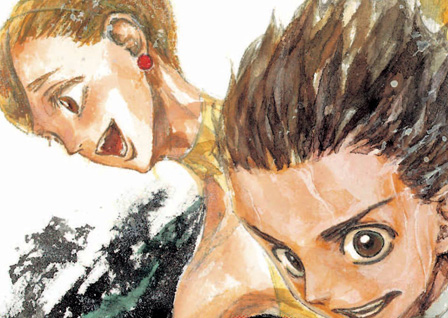
Welcome To The Ballroom
Tomo Takeuchi
11 vols
Kodansha Comics
ISBN: 1632363763 (Amazon)
This is a sports story and one of those sports stories about the prodigy player who got a late start on the sport and is going to quickly make up for lost time because he’s that good. It’s a common enough formula, but Welcome To The Ballroom performs its steps very well. It’s graceful on the fundamentals while throwing in some delicious variations for a pizazz that serves to elevate the rest of the story. In the five vols I’ve read so far (I’m enamoured enough that I plan to continue with the series as new vols are released), fifteen-year-old Fujita moves from entirely inexperienced amateur to gifted would-be competitor. He begins the series aimless and struggling to find an interest as he is being pushed to choose a high school to attend. Accidentally, he finds himself in a dance studio with members devoted to competitive ballroom dance. While initially embarrassed and hoping nobody discovers him there (male dancers have about as great a reputation amongst other teens in Japan as they do here), Fujita sees a video of what competitive ballroom dance is actually like and in set alight. He has a direction now and will rocket toward it through the rest of the story, meeting obstacles and overcoming them or using his defeats by them to improve himself. (See? That sports story formula. AKA life story formula.)
If you’ve read sports manga before, you’re probably familiar with the story beats, but where Welcome To The Ballroom shines is in its visual depictions of athleticism. In Polina, Bastien Vivès ably depicted his ballet dancers in spare, minimalist gestures, giving the dance a quiet fluidity emphasizing the grace and beauty of the form. Welcome To The Ballroom doesn’t remotely attempt this. Takeuchi’s dancers are vibrant, bursting with frenetic energy. They are electric and exciting and Takeuchi draws flourishes to highlight some of the emotional energy exploding beneath the skin. Fire will crackle off the clasped hands of a couple as they waltz. A character will be engulfed in flame to express his rage or passion. The skin of another will bristle and steam as their waning strength rejuvenates to pull out one last showstopper. And the sweat.
Takeuchi does one thing I’ve never seen in a comic about active characters before. They are drenched in sweat. Rivers of it pour from their hairline down their faces as they exert themselves. It’s an incredibly small detail but it goes so very far in selling the world of these competitions. The beautiful, gorgeous women in this book do not glisten. They sweat. Buckets. It’s perfect and real.
So far at least, Welcome To The Ballroom doesn’t escape its tropes or formulae, but it’s not trying to. Instead, the book is playing entirely within the established realm and doing so with verve. It’s nailing all the steps and avoiding many of the pitfalls. It’s sweeping across the floor getting it done and showing how to do it. Welcome To the Ballroom doesn’t have the emotional range or sweep of Cross Game but does make its sport thrilling even for those, like me, who don’t have much actual interest in the activity depicted.
201–210211–220221–230231–240241–250
251–260261–270271–280281–290291–300
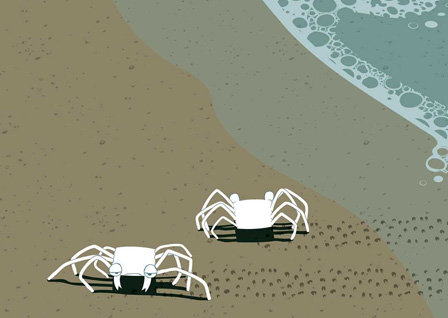
March Of The Crabs
Arthur De Pins
3 vols
Archaia
ISBN: 1608866890 (Amazon)
March Of The Crabs concerns a particular species of crab (that I'm not sure actually exists) that is small, has no predators, and cannot turn. These little guys can only move side to side with no deviation. So, for the duration of their lives, the walk back and forth along the single vector into which they were born (barring external acting forces, like a wave or something). A crab who finds herself fancying a crab she walks parallel to will never have the opportunity to touch that crab.
Sad life.
Having no predators and being outside the food chain, these crabs have never had the need to evolve. But now, this one crab has an idea, one that will begin a change across the race. He hops on the back of a crab going perpendicular to his own path and through teamwork, they can travel anywhere along that x and y coordinate grid. And there are more surprises in store for the species—and all the political turmoil that naturally goes along with that kind of thing.
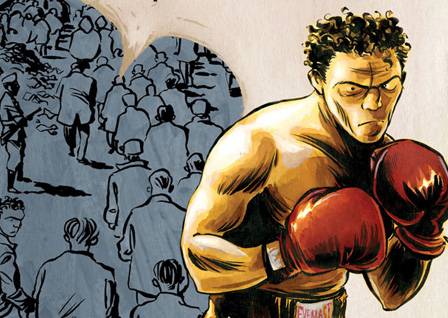
The Boxer: The True Story of Holocaust Survivor Harry Haft
Reinhard Kleist
200 pages
SelfMadeHero
ISBN: 1906838771 (Amazon)
Harry “Herschel” Haft spends significant portions of his life being identified by his past. Even as he prepares to disembark onto American shores for the first time, Harry is overwhelmed by turbulent visions from his time in front of Nazi ovens. Inconspicuous moments are haunted by the memories from which his own personal history snakes out to grip him by the throat, offering both paralysis and catalyst. This is Harry at his most American. Occasionally spurred by a kind of romanticism and glimpsing a self he hoped to one day inhabit, Harry throws himself into his boxing—all to the end of finding again the love of his life and making true the faery tale. Only by beating and clawing at the lives of others will he be positioned to take on the identity he dreams for himself. This is Harry at his most American. Finally, the boxer surrenders his dreams to what he imagines must be reality. He takes up a new daily struggle and throws himself into the most immediate of concerns: food, shelter, companionship, progeny. His dreams no longer control him, his past no longer commands him. He is wholly devoted to the now. This is Harry at his most American.
Though of course it isn’t all so simple as that. Even while Harry is who he is in the present, he cannot shake the ghost of the past—ghosts that twist his dreams for the future. The former boxer is harried by the life he once hoped to live and those dreams built of a busted prescience only work to diminish the identity he finally settles into. He’s a man torn at by invented creatures beyond his control, and he is weak in the face of them. Yet simultaneously, this man—this boxer—is full of spit and fire and fight. And that’s actually where half the wonder of Kleist’s work resides.
The Holocaust tale is one of broken hearts and spirits, of human persons reduced to walking ghosts. It’s terror after terror and it breaks everyone, rendering them into the soulless. Beyond even the deaths and murders and rapes and incinerations and gassings, probably the thing that devastates me so entirely is the iron work of destruction the Nazi machine wreaks on the souls of their victims in these stories. Perfectly believable, sure; yet not something I want to see more than a handful of times. Haft, however, is a pugilist. And even if he isn’t yet a boxer when he gets dragged to the camps, he’s born a fighter. He’s got spirit and its nigh unquenchable. The Nazis will go to great lengths to diminish Haft, to strip him of his inner fire; they will essentially destroy him and ruin him for all time. But it will take something greater than Hitler’s mania to turn Haft into the living dead. Because he fights and fights and fights.
Even when he establishes himself in the US boxing circuit, Haft makes certain his boxing trunks are decorated with a Star of David. This could easily be seen wholly as a redemption and repurposement of the star that was used to damn the Jews not even a decade earlier, but there’s more to it than just that. The five-pointed pentagram, associated with Daivd’s royal son, is called the Star of Solomon; it’s the hexagram that is David’s star. And while both kings, Solomon and David, carry their measure of historical fame in the Jewish mythos, David was the warrior—so bloody-handed and vicious in battle that he was forbidden from building a temple for Yahweh by Yahweh himself. Solomon’s reign, on the other hand, was marked by peace, prosperity, and leisure. Solomon’s star could never suit Haft for Harry is every bit the tortured warrior and fighter that King David would have been.
So when we see in The Boxer's opening pages that Haft is broken and crazy, we are driven to find out why. It’s a perfect opening, especially as Kleist immediately juts back to fourteen-year-old Harry (then named Hertzko), full of piss and fire and life. It’s a fantastic setup and by the time Kleist catches us up again to the Harry Haft revealed in the opening pages, it all clicks. We’re sold entirely on the tragedy and victory of his life. All things have come to resolution and we are satisfied.
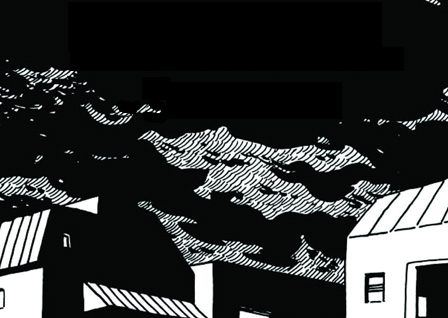
Palomar: The Heartbreak Soup Stories
Gilbert Hernandez
520 pages
Fantagraphics
ISBN: 1560975393 (Amazon)
This is an expansive experiment, following a huge cast of characters through a nearly madcap existence in a small Mexican village over the course of decades. People live, die, are born, leave, and love. Taking any single story from the collection feels like a weakness. These stories grow and become stronger by their proximity to one another.
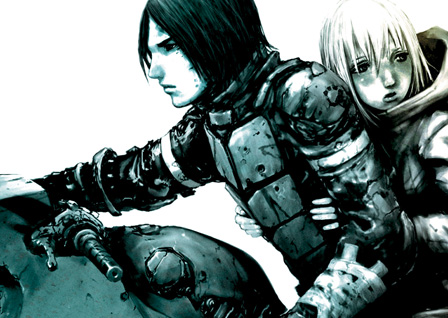
Biomega
Tsutomu Nihei
6 vols
VIZ
ISBN: 1421531844 (Amazon)
Marking the boundary in Nehei's development between his scratchy manic style in Blame and his ultra-crisp austerity in Knights Of Sidonia, Biomega sits both as an interesting artifact and a valuable work in its own right. The first half feels like a high-octane romp much in the style of Blame, where you have a ridiculous sort of human dude with ridiculous tools plowing through opposition forces. Then, about halfway through, the shackles get blown off and things just go straight bonkers. And also, his aesthetic because to clean up. Like Blame, when it's all wrapped up, you're sitting there going Wait, what? And then you sit on it, reread the last volume or maybe the whole book, and then you come to a place of peace with the story maybe. Maybe you look online for theories, for interpretations. And maybe it all starts to coalesce for you. Maybe. But in the end it doesn't really matter how you felt in the end because man what a wild ride!
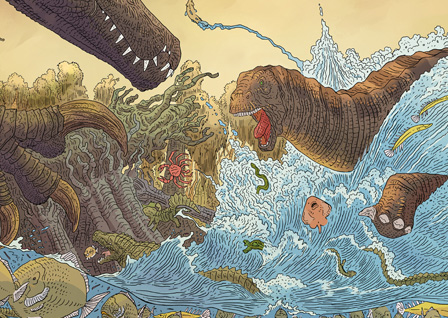
Age Of Reptiles
Richard Delgado
4 vols
Dark Horse
ISBN: 1595826831 (Amazon)
Silent comics are really difficult to pull off well. They’ve got a lot going against them. Exactly half of the linguistic repertoire being forbidden, the creator is forced to rely wholly upon visual language for all exposition. When characters cannot exposit their own motives to the reader, they must rely on illustrated cues to make their purposes, intents, reasons, and passions both knowable and then known. And as difficult as that sounds, the requirement upon the artist of these characters is phenomenal. Not only does the artist have to reliably draw characters recognizably and convey story through panel-to-panel storytelling transitions (as is the case even in comics featuring dialogue and narration), but beyond this, the artist must be able to convey all those burdens generally carried by the writer of words. Personality. Interaction. Interrogative. Exclamation. Thought. Emotion. Reaction. Success in these tasks takes the hand of a master.
In his third book in the Age Of Reptiles series, The Journey, Ricardo Delgado reveals a magnificent work of dinosaur fiction. Fourteen years after he began the series, Delgado’s come to a design and illustration sense that is easy on the eyes, powerful in communication, and still adept at conveying the wonder of the earlier series’ best moments. His work is still incredibly detailed but shows a marvelous sense of restraint, allowing abstraction where needed. As well, there are moments such as a partially devoured anklyosaur floating in a river that are magnified by Delgado’s talent with framing and negative space. What may be most jaw-droppng in “The Journey” is just how many dinosaurs Delgado draws on every page. His story calls for it for sure, but it’s still a minor wonder to behold.
Where The Journey also excels over the prior two series is in story. To illustrate, however, I’ll have to complain about something central to the earlier two books.
The reason, presumably, that Delgado chose to make Age Of Reptiles a silent work is that dinosaurs are not people. They presumably have little facility for language and if they did and we could translate it, their way of conveying meaning might be so alien to us that we wouldn’t understand anyway. My guess is that this book was made wordless in a bid for realism.
The problem, if realism is Delgado’s reason for not verbalizing anything, is that the first two series (Tribal Warfare and The Hunt) are built almost entirely on personification. Tribal Warfare features a grudge between a family of T-rexes and a family of utahraptors (I think they’re utahraptors). The lead tyrannosaurus scares the raptors off their fresh, rightful kill and initiates a back-and-forth war of attrition that lasts four chapters and ends in all-out battle. It’s a fine story but not a fine dinosaur story unless you want your dinosaurs fixed with embedded human motivation. The Hunt follows a young allosaur as he flees from the murder of his mother by some wildly coloured raptors. Their pursuit of him lasts for what seems years. Long enough at least for him to grow to full-size. Both the raptors’ dogged pursuit of the allosaur despite there being far more docile game everywhere and the allosaur’s plan to revenge himself against them left me incredulous. I couldn’t be sure why Delgado didn’t just give these animals voices if he was going to give them human motivation.
The Journey solves this problem in two ways. The first is that Delgado gives no opportunity for these reptiles to act in any way other than as the animals they are. The other is that The Journey is not the story of a dinosaur protagonist but instead the story of a massive migration. I’m reminded of Planet Earth's segment on the migration in Africa toward the Okavango Delta. Delgado depicts a collection of herbivore dinosaur herds moving from arid lands toward a lush forest. Their way is perilous and they are followed closely and picked at by predators. If there is a protagonist at all, it is the combined herd, striving forward while being winnowed and whittled. It’s magnificent and I’m so very glad that Delgado chose this direction for the third series.
The one sadness is that Age Of Reptiles isn't collected into a gorgeous oversized hardcover. It isn't even collected in a standard-sized trade paperback. Instead it's bunched into the back of a perfect-bound manga-sized omnibus collecting the first three Age Of Reptiles series. The Journey is a book that deserves space and room to breathe. It would have made a great 13"-tall hardcover, like those ones that Nobrow was doing a while back. The one bright spot of this development (beyond that the book exists at all) is that you DO get to see the earlier two series and marvel at just how well Delgado has evolved as an artist and storyteller.
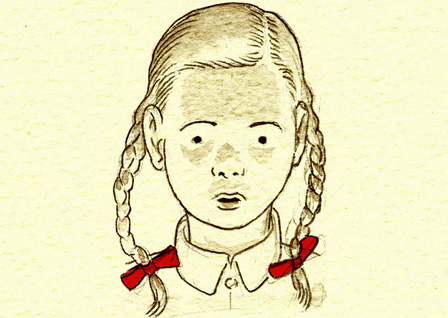
Dotter Of Her Father's Eyes
Mary M. Talbot, Bryan Talbot
96 pages
Dark Horse
ISBN: 1595828508 (Amazon)
In this both biographical and autobiographical work, Mary Talbot (aided visually by husband and illustrator Bryan Talbot) confronts the struggle of society to lurch into the era of modernity and beyond. It’s unclear whose story Talbot is more interested in (or if she even has a preference), but she introduces an inclusio whereby she in the current day finds an old ID card belonging to her now-deceased father. Inside the framing device Talbot pursues two narratives: one concerning her own formative years at the hand of her father James Atherton, a well-regarded Joycean scholar, and the other charting the development of James Joyce’s own daughter Lucia and the relationship he had with her. Neither relationship is a thing of joy and beauty, but one suspects that if both girls were born to the same fathers a century later, the absence of certain social constriction might have allowed for happy endings all the way around.
As delineated by Talbot, both Mary’s and Lucia’s lives are welled up under the pervasive irony of being the children of bastions of modernism who cannot see clear to apply modernist principles to their own patriarchal relationships. Dotter lays special emphasis on the rallying cry of the paradigm movement: “How modern!” Everyone around both Mary and Lucia are caught up in the transformation of culture—of the evolution of the stilted, errant, grossly conservative pre-modern society into the glorious fortress of progressive social democracy found in the modern utopia. It’s a period of hope and change. And each of these two fathers are in some sense heralds or ambassadors or representatives of this new civilization.
The irony of course is that in the cold darkness of their hearts’ hearts, they are still staunch defenders of the Old Ways—hopeless, helpless relics who will unconsciously stop at nothing to crush the Spirit of the Age in its most immediately tangible bastion. They will carelessly destroy their children (or perhaps die trying), unaware that in so doing they make mockery of those values they pretend to hold dearest to their hearts. Mary’s father Atherton will do so by his direct actions built of disdain and outright dismissiveness of his daughter. Joyce, on the other hand, will combat his own values through a negligence in policing he and his wife’s failure to recognize Lucia as something more than their provincial understanding of the female being will allow.
“Sad life. Sad life,” to quote a certain wise but immolated horse.
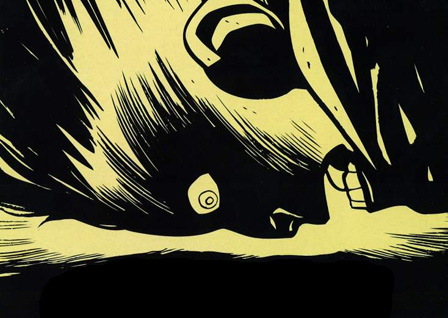
RASL
Jeff Smith
4 vols
Cartoon Books
ISBN: 1888963379 (Amazon)
Jeff Smith’s RASL is sometimes billed as sci-fi noir but is really only sci-fi that’s influenced by noir. And that’s okay. It’s okay because, for the most part, the book is really good. And at the end of the day, even if the thing you want more than anything is Billy Madison 2, you’re still gonna be pretty happy if you get Last of the Mohicans instead. Apple? Orange? Who cares so long as it’s tasty and refreshing.
One of the most immediately discernible positives about Smith’s book is the art. If you were a fan of Bone's illustrations, you’ll be right at home in RASL. My young daughter saw me reading the book, looked inside, and asked if it was a new volume of Bone. She’s three-and-a-half and she could pick out Smith’s style at a glance. He’s built the book around the same strong use of positive and negative spaces, the same fine-lined figurework and exaggerated postures. And just like Bone was dominated by beautiful pages, so is RASL—even if the New Mexican desert isn’t half so lush as Thorn’s Valley.
Like his prior opus, this new work allows Smith to explore the divide between the visible and the spiritual, between the empiric and the elusive. The scientist-on-the-lam hero, Rob, is caught between mysteries his methodologies have a chance at explaining and the myths that roam his world unheeding the requirements of physics or the natural laws. He encounters the god he trusts, Nikola Tesla, through diaries, journals, and academic papers. He blunders into a god he’ll never understand through simple acts of providence. Whether he encounters the divine or not is something that Rob is not equipped to discern. And in the end it doesn’t really matter. After all, this is a thriller, dammit, and Rob’s trajectory and the conventions of his narrative will not allow us to dwell overlong on philosophy or metaphysics.
We can’t forget that Smith is modeling Rob’s journey on the comfortable formulae so native to the noirish mode. Rob’s a dirty angel, but he’s our angel. He’s morally tarnished (and was so even before he went off the grid to flee a government bent on information and revenge), stealing art and shacking up with a prostitute. He’s a man of deep appetites and his use of Tesla-inspired world-skipping technologies only serves to enlarge his antiheroism and needs.
And as much as he’s caught between science and spirit, Rob finds himself wedged between any number of other duets. Some abstract, others less so. Tormented by the ghost of a scientist and the ghost of a woman. Crushed between his rational mind and his hungering passions. Full-bodied romance and the stale whiskey of base desire. Selfishness and sacrifice. He’s the hooker with a heart of gold, only he’s selling his soul instead of his body. He could be a character out of Chandler if only he had a chance with the snappy patter. He’s hard-boiled alright, but not much of a talker. He’s closer to John McClane than he is to Philip Marlowe.
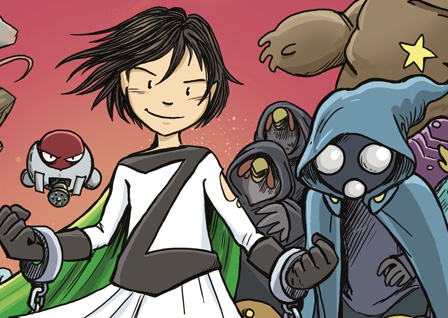
Zita The Space Girl
Ben Hatke
3 vols
First Second
ISBN: 1596434465 (Amazon)
One of the biggest joys of the last several years has been all the notes of thanks I've received for recommending Ben Hatke's Zita The Spacegirl. Little emails, tweets, vines (when those were a thing), instagram photos tagged to me, people stopping me in Starbucks. Pictures of kids holding up Zita The Spacegirl. Video reviews with kids saying how good the books are and thanking me for recommending them. Stories of little girls going to sleep clutching a volume. It's amazing, and playing a part in kids finding a story to inhabit fills me with a tremendous sense of joy.
Zita The Spacegirl is a very good graphic novel series. And it gets better with every volume. When kids get to the third volume, it knocks their socks off. Zita the Spacegirl (and its follow-ups) relates the adventures of a reluctant hero, Zita, a girl sucked from our end of the galaxy to another end of another galaxy. It’s Homeward Bound: The Incredible Journey—only instead of two dogs and a cat, it’s just a lone lost girl who becomes something bigger than she is. And it is a superb read for kids, and probably pretty fun for grown-ups.
And really, as much as I love hearing about how much these children love Hatke's books, the thing I love most about Zita The Spacegirl is how much my own daughter loves the series. Just as other children do, she has often been found sleeping with one volume or another of the series. Her fourth birthday party was themed around Zita. She renamed my wife Strong Strong, just because. She wanted me and her to somehow learn to fly so that she can be Five and I can be Eight for Halloween that year. And that was all before she found out that the third volume was coming out.
Somewhere around the Christmas before it released in May (five months later), I told her the news: that the third and final book in the Zita series was coming in a few months. She was awestruck. She couldn't wait. And then I suggested the impossible—that maybe, if she worked really hard, she might be able to learn to read in time enough to read it to me instead of the other way around. And that was all it took. My four-year-old daughter was alight and spent the intervening five months trying to learn to read. She had "school" every day with her mother, learning letters, learning phonemes. She demanded to learn. I was blown away by the determination Hatke's series has inspired in my daughter. By the time the final book came out, she was reading sentences and pointing out the names of stores on signs. At the beginning of that April when I told her that The Return Of Zita The Spacegirl would come out in a month, she asked if I could make it wait eight more months so that she could be totally and completely ready. She loves Zita's story so much that she's willing to put in an hour of work every day of her own initiative—just for the potential joy of being able to curl up with the book whenever she wants and not have to rely upon either another reader or memorization. I would love any book that could open the floodgates to the whole history of narrative excellence to one of my children. And so I love Zita The Spacegirl. Not only for the very cool little space adventure it is, but for the lifetime of Story that it initiated for my daughter.
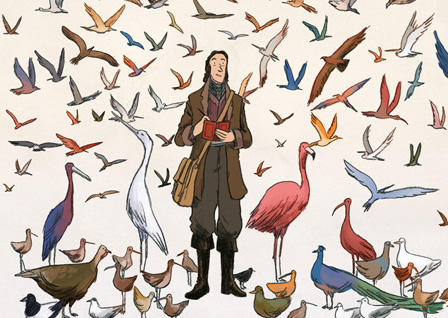
Audubon, On The Wings Of The World
Fabien Grolleau, Jeremie Royer, Etienne Gilgillan (translated by), David Sutton (translated by)
184 pages
Nobrow
ISBN: 1910620157 (Amazon)
Audubon is a sumptuous book, filled to brim with illustrations of forests, rivers, animals, and birds. It was a delight to discover the mania that lit the life of John James Audubon, a man of whom my only prior knowledge was his connection by name to the Audubon Society.
It's a well-paced jaunt through the man's later life, dwelling on episodes that confirm his infatuation with nature, his love for it, and his need to catalogue it. It's also interesting to see the 19th century environmentalist for how vastly different they are from their contemporary counterparts. In the 200 years ago, the environmentalists were hunters and one of their best tools for securing assistance in unveiling the natural world to the public (and eventually protecting it through parks and reserves) was to kill lots of animals and display them. This was Teddy Roosevelt's M.O. as well.
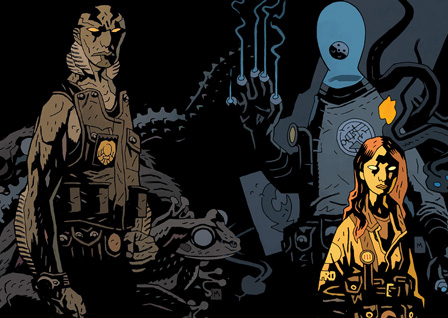
BPRD
Mike Mignola, John Arcudi, Guy Davis, Tyler Crook et all (coloured by Dave Stewart, lettered by Clem Robins)
30+ vols
Dark Horse
ISBN: 1595826750 (Amazon)
Spin-offs are always a bit of a dicey proposition. For every well-received Frasier or Rhoda, there are many more that fail to capture that spark of interest that dazzled the audiences of their progenitors. The Tortellis, Just the Ten of Us, Joey. Every spin-off is something of a funambulist and over a variety of perils there are these fine lines they must traverse. Beyond the normal gamut of ways in which a new series might fail, spin-offs have additional baggage threatening. Too derivative. Not derivative enough. Under-developed characters. Too deep in the shadow of the original.
Still, in some cases, a spin-off is the only way in which to preserve well-loved supporting characters when their series turns in a new direction. Such was the case for the cast of BPRD. While long at home in the pages of Hellboy, Abe Sapien, Liz Sherman, Kate Corrigan, and the mononymous homunculus Roger (each members of the Bureau of Paranormal Research and Defense) were left lurched in the conclusion to “Conqueror Worm.” Hellboy, discouraged by the duplicity with which the Bureau had treated Roger, leaves the organization to pursue a more personal venture. The series Hellboy at this point cuts ties with the BPRD and, more importantly, with Abe, Liz, and the others. Hellboy becomes a book with a cast of one.
The only problem here is that Hellboy’s BPRD cohorts are great characters and readers want to know what happens to them. Behold the birth of BPRD, the series.
I was nervous. I loved these characters. Kate was as yet underdeveloped, but Abe had a rich history to be explored, Liz’s inner struggle was left unresolved, and Roger was just fun. I wanted BPRD to be as awesome as Hellboy was. I wanted this spin-off to be the exception to the rule.
And then I read the first arc, "The Hollow Earth," a story delving into a neat piece of 19th century fantasy lit legend. It fell flat. The story (with three writers) struggled to find its feet. The elements were there, but the tone was off. Ryan Sook’s art was accomplished but felt too much like an aping of Mignola’s work on Hellboy. When I first saw panels from the book, I thought Sook would be a good fit, taking over where Mignola left off. It didn’t work out.
The next group of stories caused my fears to grow. A series of one-shots, each featuring a different artist/writer combination, almost wholly failed to do anything worthwhile with the Bureau’s peculiar agents. There was one exception. “Dark Water,” written by Brian Augustyn with art by Guy Davis, was the perfect mix of who the BPRD should be and what the series could be. I suspected that it was Davis’ art that really sold home this vision of the book. Sadly, “Dark Water” came early in this series of short stories, so by the time the next arc began, I was ready to bid farewell to the Bureau and to characters for whom I no longer cared.
Fortunately, the fates would intervene. The day the first issue of the next arc, “Plague of Frogs,” came out, someone from my local comics provider accidentally placed the book in my pull box. I got home with the week’s haul and found chapter one of BPRD: Plague of Frogs shuffled in with my other books. I picked it up, discouraged that I had paid for what was in all likelihood a dog, flipped through and discovered that Guy Davis had drawn the story. Comforted that at worst I would be able to indulge in some very good art while trying to ignore some mediocre story and inept handling of characters, I plowed through the book.
It was good. Very good. I wasn’t ready to pronounce BPRD now a book that I wanted, but I wasn’t any longer convinced that I didn’t. At the least, I would get the rest of this arc. Again, at worst: I still had Guy Davis to enjoy.
The thing about BPRD the series is that “Plague of Frogs” is just the start. That story is when things finally click. The series not only becomes this dynamic mix of quiet character moments and large, Hollywood set pieces, but it takes on a harness of building tensions. BPRD is absolutely driven by Big Ideas. It starts in “Plague of Frogs” and even if you have some idea that Things Are Afoot, you really can’t conceive just how tremendous these will be in scale.
“Plague of Frogs” does two things right (three if you count the incredible contributions of Guy Davis). More really, but I’ll focus on just two.
1) The third volume of BPRD stories introduces a driving story-force for the series. Previously, both BPRD and Hellboy had simply been a series of loosely connected (if that) investigations into discreet episodes of the paranormal. There had never yet been the feeling that there was a larger story at play. (While Hellboy did have the whole Ogdru Jahad thing going on, it was never really anything more than this ominous background to the series.)
“Plague of Frogs” introduces a Threat, something that couldn’t be wrapped up over the course of a single arc. Something dangerous. Something that not only would bite the Bureau in the ass over and again, but something that if not contained, would pose a real threat to the entire world. Within “Plague” it’s not clear just how big a threat the frogs would become, but this is where it all starts—and while it starts small enough, things rather quickly escalate over the following books.
One of the really cool things about BPRD as a series is that it doesn’t fear alternating drastically the status quo of the world it takes place in. Not only do the characters age at the same rate we do, but if the story demands it, entire cities or nations can be destroyed (sorry Nebraska! sorry Austria!). At the beginning of the series, the threats the BPRD encounters are generally unknown to the average citizen, but by even halfway through the series, everyone with a television knows of the frog menace. This sets up some very interesting storytelling possibilities for future series.
2) “Plague of Frogs” begins to draw Abe Sapien out from merely being a simple sketch. Previously, he had never been depicted as much beyond being a man-fish with no history prior the Bureau discovering him in suspended animation. “Plague” starts exploring that Prior and Abe, in many ways, begins to become the driving force for the series.
Taking lessons from the exploration of Abe, Mignola (joined by John Arcudi from volume four onward) take pains to focus on characterization for all the primary agents of the Bureau. These are complex people with complex histories living in complex circumstances. It makes sense that their personal stories would require special attention even in the midst of great cataclysm. Frequently, the book retreats from action-packed battles or investigations to eavesdrop on conversations between agents far from the field, holed up in cafeterias or offices, prisoners to mundane tasks and their own wounded psyches. It makes for a great story and BPRD's is built on the strengths of such moments.
201–210211–220221–230231–240241–250
251–260261–270271–280281–290291–300

Delilah Dirk
Tony Cliff
3 vols
First Second
ISBN: 1626728046 (Amazon)
Growing up, I never had any concern with finding myself in the heroes of adventure stories. Being white and male, I had the privilege of being more than adequately represented in the protagonists of these adventures. Or at least roughly represented. Really roughly. Roughly enough so that no hero of any of the books or movies I loved remotely resembled me save that, perhaps, they had penises and skin that was lighter than it was dark. They might not have actually had penises—I never had the opportunity to check, nor would I have even considered the attempt. In truth, regardless my privilege, the heroes of my favourite adventures were always indelibly alien to me. The depth of their foreignness was complete. I did not have their strength, their skills, their abilities, their wit. Moreover, I could not conceive that I might ever share any of that je ne sais quoi that made them suitable heroes.
And here, on the cusp of Age Forty-4, I can look back and applaud the considerable judgment I possessed as a seven year old—because I have acquired none of those heroic traits (save perhaps a smidgeon of wit). I have always then wondered at those who are sad about not seeing themselves in their heroes. Chalk it up to privilege if you care to, or perhaps to the fact that I just never seemed to share in the growing-up experiences that so many of my friends had, but I have always imagined that I would feel as much disconnect between myself and my heroes as if I had been black or Asian or female. Because heroes were never even human to me. They were this Alien Other. When Spider-Man was Peter Parker, he wasn’t like me. He was this non-human creature with amazing skills that was pretending to be me. He was the privileged one and he was wearing some equivalent of black-face to try to blend in, some human-face camouflage. It didn’t work. Not for me.
Which is not to say that I didn’t enjoy heroes or their adventures. I did. I ate that stuff up. I loved Spider-Man. I loved Rick Hunter. I loved Wolverine and Groo and Rogue and pre-ninja Psylocke and Nightcrawler and Tintin and Power Pack. And Kitty Pryde. While still foreign, Kitty Pryde was the adventure hero whom I could most relate to. I would of course never be able to be her or possess near a third of even her non-superhuman abilities. But if I were forced to relate to one of these fictional figures, it would have been her. And that’s kind of the point: I didn’t love these characters because I could relate to them. I loved them because they were unbelievable and fantastic. The stories they got wrapped up in were ludicrous and impossible and kind of delicious. And while I’ve mostly graduated from adventure tales, I’m still able to take great joy in the occasional episode—despite not feeling that I am remotely represented in the protagonist. Bone is fantastic and amazing, even though Fone Bone isn’t even human. Raiders of the Lost Ark is thrilling, even though Doctor Jones is an immortal possessed of uncanny luck. The Sea Hawk is exciting and daring, even though there’s nothing in my make-up that could possess me to commandeer a tallship or run a guy through with a rapier.
And I found Delilah Dirk as delightful a hero and her adventures as blisteringly exciting as any other—despite the fact that she is a woman and I, clearly, am not. And a woman that has skills and fortune greater than those of any man or woman in all of the combined histories of the real world. She has a winning personality and a basketful of impossible abilities. I don’t know whether my daughter will take after me and feel no need to see herself in her protagonists, but if she does hope to find herself in her heroes, she won’t find that in Delilah. All the same, I expect she’ll take as much joy in this episode as I do. Delilah Dirk may be unconvincing in terms of realism or relatability, but it’s a grand little adventure.
While Delilah may be the book’s hero, its narrator is someone who flies a little closer to the earth, the mostly accessible Turkish lieutenant, Selim. It is through the eloquent Selim that we encounter the whirlwind, Delilah Dirk. He is as incredulous as we might be when encountering a woman who is trained in forty-seven sword-fighting techniques, who sits as a high-ranking member of three royal courts, and who—in the preindustrial Mediterranean—claims the power of flight. Selim is just a normal guy, mostly. He’s a janissary lieutenant with astonishingly good taste in tea and a certain loquaciousness, but with no other skills to recommend him. Delilah helps him out of a bind and they begin their travels together, moving from hot water to scalding.
Only, when one is on Delilah Dirk’s side, things can’t get too hot—just more interesting. The only time when Miss Dirk isn’t entirely in command of her situation, Selim is able to provoke her to action simply because in the present crisis he has far less to lose and so is less shocked by their predicament. Delilah Dirk is a woman-run show. Honestly, it’d be a delightful romp either way, but it’s refreshing to see an overly competent woman in the Doctor Jones role for a change.
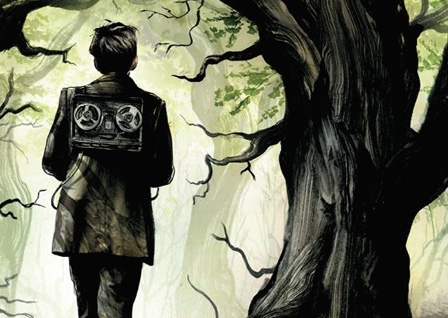
The Lost Boy
Greg Ruth
192 pages
Graphix
ISBN: 0439823323 (Amazon)
This is a tale of the woodland kingdoms creeping in to reassert command over the realm so long ago thefted by the avarice of men. It’s an old story, told over and again, one of the most common tropes of the fantasy genre, speaking to human guilt accrued from our sometimes violent domination of the natural realm. It would have been easy for Greg Ruth to have produced something boring, just as ninety-nine percent of fantasy writers tackling the sub-genre have. But apparently, he’s too good for mediocrity.
Really, and I mean it, this book is gorgeous and contains a story that is both a kind of lived-in-comfortable as well as sparkling with an intelligence and verve we don’t often see in books of this ilk. To the art, we find in Ruth a masterful, confident creator whose ink-and-wash combination is a visual wonder. In some ways, the work resembles the real-world segments of The Nao of Brown, only with greater detail and less left to the work of Dillon’s kind of sense for colour. While dynamic, Ruth’s illustrations are firmly grounded in a realism that lends the book a gravity that a more cartoony artist would have to compensate for by using other techniques (probably relying too heavily on the writing and dialogue). By proposing realistic crickets and owls and trees and humans, Ruth raises the stakes of his story, allowing us to more easily imagine its events occurring in some suburban neighbourhood within twenty miles of where we sit while reading his book.
The way Ruth unfolds his story is well-conceived. He bounces between the present and the early '60s by means of several tapes worth of rediscovered vintage recordings—tapes that hold a peculiar mythos in the town. Like many such fantasy stories, our entry point is as a newcomer, someone unfamiliar with lore and legend—someone through whose eyes we might become gently acquainted to the weirdness in store. Through Nate, the newcomer, we encounter an earlier newcomer, Walt, child of the '60s. We see that strange things have been afoot and boiling to a head for a long time, decades at the least. And because the rate of a newcomer’s apprehension of the world he’s entered might be a bit slow, we’re also given Tabitha, the townie who’s been on the trail for years and has a pretty stock of files on the case already. The combination of the three characters and their specialties allows Ruth to reveal tale, trials, and consequences at essentially the perfect rate.
All three of the principal child characters are written well and Ruth builds enough meat on their psychological bones that none of their decisions come out of left field or are even at all unpredictable. Even better, for any inadequacies Ruth has built into their characters, each of the three is likable enough that we can pretty easily empathize with their plights. I enjoyed watching them sound out their place in a world whose seams are unstitching at too quick a rate.

Scott Pilgrim
Bryan Lee O'Malley
6 vols
Oni
ISBN: 1934964573 (Amazon)
Scott Pilgrim debuted nearly 15 years ago. I was 30 then and hanging on to my 20s and, so, probably predisposed to like it. I got a lot of laughs out of it and I felt something I think was probably real as I watched Scott struggle to grow up across those six volumes. But man that was a while ago and it's been a long time since I've read it. Maybe I'd still love it. Maybe I'd only still love Wallace. But for nostalgia's sake, this is where I'm putting Scott Pilgrim.
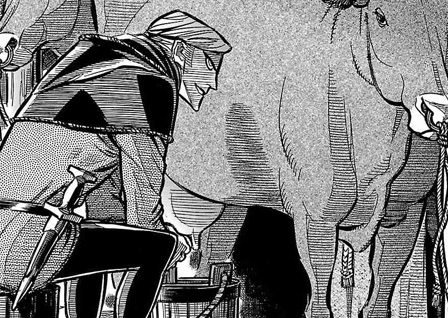
Wolfsmund
Mitsuhisa Kuji
7 vols
Vertical
ISBN: 1935654756 (Amazon)
The book of Genesis does this thing right at the beginning of the first book of the Pentateuch, right after the Fall of Humanity and right after the Cain and Abel incident. It’s rather an establishing shot for the whole of the rest of the Pentateuch. It’s like Orson Welles’ fabulous crane shot introducing Touch of Evil. It basically tells you everything you need to know to make sense of what follows. It gives you foundation enough not to be irreparably lost. It’s ambiance and context and foreshadowing all in one. And it works magnificently for those with patience enough to care.
Genesis 5 reads as a litany of death. So and so was born, lived so long, had a particular son through which the dynasty would pass, lived for so many years, and then died. Next! The book repeats the formula with rare exception for ten generations. It’s a bit taxing to read but drives home the author’s point that after things went haywire in the Earthly Paradise, there is no stopping death. Things were promised to get better, but they just aren’t. No matter how long a person lives, no matter how rad they were, they all die in the end. It’s macabre (though treated a bit sterile in this early chapter—things get cooking later with details to spare) and even tedious, but it’s to a particular end.
Wolfsmund has the same thing going on. The first two volumes are relentless. They’re gruesome and draining and don’t really seem to go anywhere. It’s just ugly death after ugly death, and Kuji seems to introduce characters only to see them tortured and dead by chapter’s end. It’s maddening and sometimes off-putting. But then, like the book of Genesis, suddenly things start happening. The loose threads of a plot begin to weave into sight and all of that earlier horror begins to make a bit more sense and it turns into a historically-based (loosely) retelling of the Battle of Morgarten (Swiss v Austrians).
That so many seemingly main characters die so frequently is probably a gutsy move on Kuji’s part. She's made a choice that threatens to alienate readers before they have a chance to invest in the plot, when it eventually arrives. Fans of gore and gruesome deaths will probably stick around for long enough, as Kuji seems to delight in finding new ways to kill off sympathetic characters. Even well after the initial formula for each chapter gives way to a more spanning and directed narrative, the creator remains well-pleased to torture, kill, and maim with abandon. A man has molten lead poured into his face. A child has his head torn off by starving wolves. A young girl is hung naked upside-down and her throat slit. A woman has her face punched in with a plate-clad fist. A man is crushed under a heavy gate. Scalding water, boiling oil, firebombs, swords, hammers, sickles. Everybody dies and dies badly. It’s pretty rough.
It got to the point in the mid-series climax where a particular (and well-justified) execution was so barbaric that I got queasy and put the book down for about six months. But from history, it's possible that this is just the tip of the iceberg. After all, it's recorded that the fleeing Hapsburg knights would throw themselves into the freezing lakes to drown rather than face the horrors of the Swiss peasantry.
So not a book for the faint of heart, BUT a very well-put-together book if you either like fanciful military history or drawings of people being murrrrdurrrd.

Wrinkles
Paco Roca
96 pages
Fantagraphics
ISBN: 160699932X (Amazon)
When I was younger, say twenty-one or so, my brother read me an account of an unpopular man in the 1600s who had been driven from a town while being pelted with stones. As a result of the injuries to the man’s head, his personality, character, and beliefs changed. He was unmade and remade because of a bad afternoon. Years later, he reverted again to his former self, but for me the damage was well accomplished. Before I had kids, my only real fear in life was losing who I was to some catastrophe like brain injury—or to one of the many handfuls of maladies that assault those of old age. Cognition, the particular way that I perceive the world, who I am: those are the essentialities to my existence. After all, if I am not me then who on earth am I?
In Wrinkles, Paco Roca underlines, circles, highlights, and writes in the margins of my fear. His protagonist, Ernest, is an older gentleman (a former bank branch manager) who suffers from Alzheimer’s (though he rarely seems cognizant of his own suffering). The text begins with his admission to an assisted care facility equipped to interact with tenants of varying degrees of dementia. Ernest’s case, when compared with some of the other guests, seems almost benign. Ernest will live out the remainder of his days here, a life mediated through the fog of medications.
Roca uses the toolset of comics to seamlessly transport guests of the home into the world as they are experiencing it. In one moment a man is seventy-two and standing alone in a foyer, and in the next he is six and is stood up awkwardly before a room of his new classmates. A woman is pictured, seated by the window in her wheel chair, old and haggard; in the prior panel she is a young woman of beauty and elegance, riding the window seat of the Orient Express. Another resident sees members of the Legion everywhere. Another is transported again and again to the moment when he secured the heart of the love of his life.
The drama of daily living with a fading mind is told with humour and verve and a lightness of being. And I found myself growing more and more anxious. These amusing anecdotes and funny bits and pieces of lives gone askew were toying with my deepest and tremblingest insecurities. On the surface I was enjoying Roca’s book and the story of Ernest’s progressive psychological collapse. It’s bright and colourful and lovely and well-illustrated and well-paced. But in the midst of my enjoyment, the terror of existence roiled and rumbled. By the end, I was panicked and undone. Roca had done so good a job of exploring the gradual dissolution of selves that I was entirely exposed, my oldest fear made raw and calamitous—all within one hundred pages in which nothing incredibly terrible happens save for that a handful of people gradually forget themselves.
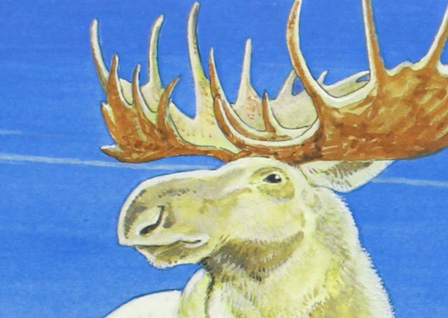
The Ice Wanderer and Other Stories
Jiro Taniguchi
240 pages
Fanfare/Ponent Mon
ISBN: 8496427331 (Amazon)
The Ice Wanderer is one of those rare anthologies that include not a single weakness. Certainly some stories are better conceived than others but it’s more a question of whether a story will be Good or Great rather than the more common Good, Okay, or Bad. The book is themed around the idea of man vs. nature (and sometimes man with nature), with only a single inclusion straying from that tonal direction.
Taniguchi has a unique ability to convey nature (and its nature) through his art. I've long been impressed with the virtuosity with which he approaches his landscapes. His pen is very fine-lined and he baptizes his landscapes in a kind of detail that makes Arthur Adams look minimalistic. That attentive detail is very much present in The Ice Wanderer and after I devoured his stories, I enjoyed sitting back and simply admiring the art he pours into each page.
The Ice Wanderer is a fascinating book for how its particulars explore on the surface the struggle between man and nature—but use this setting to sound out more interesting ideas. Taniguchi, as he’s shown in both The Walking Man and Inu o Kau, sees the human relationship with the natural realm less as confrontation and more as symbiosis. Certainly he sees nature’s present boundaries, which will threaten to destroy the man or woman foolish enough to transgress those lines, but at the same time Taniguchi presents a beautiful, awe-striking world in which humanity does harbour some chance at living not at odds with but alongside the natural realm.

Breakfast After Noon
Andi Watson
200 pages
Oni
ISBN: 1929998147 (Amazon)
Andi Watson ruled the American romance comics scene in the early Aughts and Breakfast After Noon was my favourite of his works from the era. You've got this unemployed dude engaged to be married to a woman who's planning the wedding but is also increasingly nervous about her fiance's lazy attitude about finding a job. He's pretty much just being a loser, but man, the trauma of job loss can hit pretty hard and people don't always recover gracefully. And the story's kind of all about that.

Echo
Terry Moore
600 pages
Abstract
ISBN: 1892597489 (Amazon)
Taking place tangentially in the same Terry Moore world as Strangers In Paradise and Rachel Rising (with very lightly glancing crossovers here and there), Echo is primarily a science fiction story of the kind where the kid finds the lost government robot that turns out to be a superweapon. Only the kid is a reluctantly soon-to-be-divorced young woman who does sculptures and takes pictures in the desert. And instead of finding Johnny 5, she gets a liguid metal super suit stuck to her. The army wants it back, she wants it off, the scientists want to understand it, the park ranger wants to know why it's haunted by his ex-girlfriend, and Cain wants to blend it with the part of the suit that he found. Cain. The original Cain. Marked by God, cursed to wander the earth undying, that Cain.
The whole thing is nutty and adventurous and fun and high concept. It's my second favourite Terry Moore after Rachel Rising.
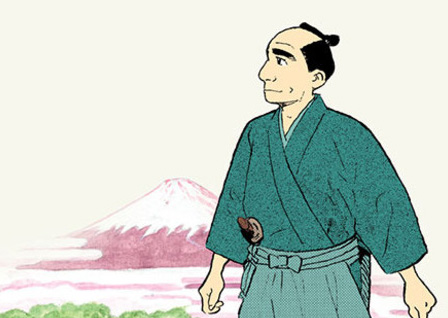
Furari
Jiro Taniguchi
208 pages
Fanfare/Ponent Mon
ISBN: 190800729X (Amazon)
Furari concerns an 18th-century man whose hobby in his early retirement has been measuring the distance between places in the city by counting his steps and perfecting the regularity of his gait. Along his way he is often caught up in the spell of his imagination, considering the creatures he runs across and how the world must look to their perspective. Turtles, cats, hawks, elephants, dragonflies, etc. Observing the people and animals and natural phenomena in his path gives him an idea for the construction of a device to help him accurately measure distance and he eventually receives a command from the Shogunate to measure and map the whole of the nation. But all that is really just an excuse for Taniguchi to draw feudal Japan and the wide variety of life that filled up the place. His drawings, as usual, are beautiful and he sometimes uses floating world style perspective and clouds to breath a sense of legend into his pages.

Mouse Guard
David Petersen
4 vols
Archaia
ISBN: 1932386572 (Amazon)
David Petersen’s Mouseguard is a wonderful series that pits medieval mice against both their common predators (snakes, owls, weasels, etc.) and their own kind. I've heard some compare it to Redwall, but I've not read the series. I also can't imagine Redwall being as lush a reading experience as Mouse Guard.
The Mouse Guard is a collection of mice who have sworn to keep the other mice safe in the lands surrounding the mouse settlement of Lockhaven in the years after the Dark Heather War (in which the mice fought hard against the weasels of Dark Heather). Each town in the circuit is noted for its particular craft or focus (in Lockhaven, that craft is politics and military pursuits). The dangers are great and the enemies many and varied - so there are plenty of stories to tell and Petersen is a worthy storyteller.
If these aren't enough to whet your appetite, check out this Free Comic Book Day offering from 2013. Mouse Guard is almost the only reason to pay attention to FCBD if you're already a reader: http://imgur.com/a/IJoPH
Because the series unfolds over a variety of volumes (and the trade dress is not particularly helpful), here is the order in which you may wish to pursue the books:
- Mouse Guard: Fall 1152 - The series intro.
- Mouse Guard: Winter 1152 - A couple months later, where the story really picks up.
- Mouse Guard: The Black Axe - Flashes back a decade or so to the origin of the axe from Winter 1152
- Mouse Guard: Baldwin The Brave & Other Tales - collects 5 of Petersen's lovely Free Comic Book Day comics
- Mouse Guard: Legends Of The Guard, vol 1, 2, and 3 - An anthology of short stories set in the world done by a host of creators, each vol bookended by a framing device written and drawn by Petersen.
201–210211–220221–230231–240241–250
251–260261–270271–280281–290291–300
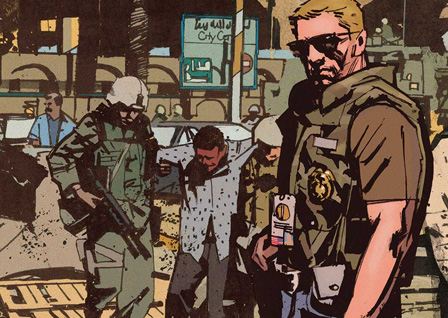
Sheriff Of Babylon
Tom King and Mitch Gerads
2 vols
Vertigo
ISBN: 1401264662 (Amazon)
The copy says retelling of the Iraq War, but that's just copy and I'd say pay it no mind. This is a crime book set in the immediate aftermath of the fall of Saddam hussein's regime. It follows the familiar beats and vectors of the crime story. What its post-war/war setting does is up the ante a touch on the chaos and the cynicism—which makes it more wild than your average Brubaker book but not quite as nutty as a Lapham book.
Where Sheriff Of Babylon really sings is in how King and Gerads unveil this story. Crime books often use non-linear narrative techniques to up tension and build anxiety and propagate confusion. SOB does this wonderfully. Knocking back-and-forth between three principal characters, King drops in lots of scenes for colour, that work more to establish a sense of place, a sense of character, a sense of voice, and a sense of ethos. Most of these scenes contribute little to plot as such save for to justify perhaps motive for later actions. It's a great book for a careful reader, one whose governing intention is not so much to find out What Happens as it is to inhabit a book and all that it offers.
Gerads page design is strong and he invents and invents and invents. Long panels, tall panels, little panels, big panels. And he works it all well within the scope of what the book is trying to accomplish.
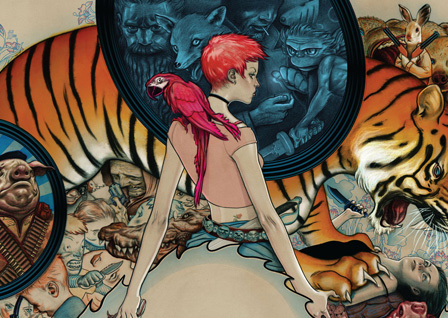
Fables
Bill WIllingham, Mark Buckingham
22+ vols
Vertigo
ISBN: 140122427X (Amazon)
Fables’ foundation is built on the idea that all the faery tales and nursery rhymes that have been expressed over the centuries in our world are somehow reflections on a multitude of very real other worlds. Worlds in which Snow White and Rose Red live and breathe. Worlds in which the Big Bad Wolf roams around large and hungry. Worlds in which Boy Blue, Red Riding Hood, Beauty and her Beast, Pinocchio, and more each have full lives only hinted at in our own versions of their stories. And circumstances being what they were, these auspicious figures were forced to evacuate their fabled realms and flee here, to the mundane world.
Because a grave and merciless Adversary had begun conquering their lands one after another, the fables found themselves escaped to 1600s Europe from where they then made passage to the New World. There, they established in New Amsterdam an enclave they call Fabletown. Protected by numerous spells and wards, Fabletown sits undiscovered in the midst of the growing New York City—and that is where Willingham first deposits the reader, four hundred years later. The fables have grown comfortable in their adopted homeland, leading relatively normal lives and holding jobs. Of course things are more complicated than that, but that is our introduction to what turns out to be a collection of indelible characters.
Also: it’s pretty aggravating, but the first volume of this otherwise wonderful series—the one in which all the principal characters are introduced—is really just a mediocre book. It holds none of the charm of the later series. Essentially, whenever I do recommend the series (as I am doing now), I have to caveat by saying: “No matter what you think of the first volume, keep going and read the second one. And then the third. It just gets better and better.” Really, the next rough patch doesn’t crop up until volume thirteen (vol 13 is a trash book), so that’s a pretty good spread.

The Hero
David Rubin (translated by )
2 vols
Dark Horse
ISBN: 1616556706 (Amazon)
The Greek stories are old and by their familiarity often become unfamiliar to us. We forget the details. We remember the names, some of them, sure. Heracles (or maybe we insist on Hercules). Zeus. Hera, Hades, Aphrodite, Hermes. We remain cognizant of the tentpole events probably. Heracles vs the hydra. Uhm, some other stuff. Did he fight the Minotaur? Medusa? He did those twelve things, right? We forget all the details though. All the motivations. All the crazy, disgusting, maddening dramas that consumed the hero simply because a Goddess was pissed off at her philandering husband who chose inter-species romances instead of her.
David Rubin's The Hero is simultaneously fanciful with the details and wildly accurate with them. It tells a version of Heracles' life that blends fantasy with technology set against a vibrant palette of colour and violence. There're internet and cellphones and television and cars and people wearing togas and using swords and archery. It's bizarre and perfect for its vision. And I feel as though I've been reintroduced to Heracles after decades of estrangement.
An amazing work, torrential in its exploration of imagination. Also, very R-Rated. Much as the life of Heracles was and very very much as a visual depiction of Heracles life would have to be were it to retain any sense of the true brutal vision of the myths we've had passed down. Rubin *may* go too far at times (some of his depictions are either truly horrible or truly depraved), but even that feels faithful to the legend. This is the first Heracles who's remotely felt like an honest Heracles to me. Despite the motorcycles and indoor plumbing.
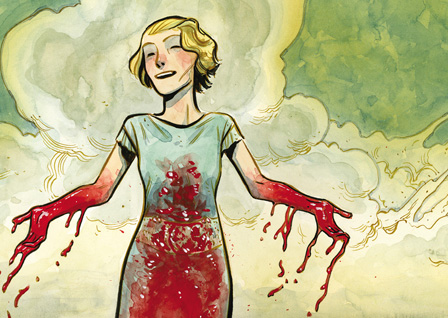
Harrow County
Cullen Bunn and Tyler Crook (coloured by ,lettered by )
7 vols
Dark Horse
ISBN: 161655780X (Amazon)
Harrow County starts off as rural horror in the vein of Freaks Of The Heartland but gradually expands into the kind of more expansive tale that made The Sixth Gun so much fun. It's the Prohibition-era story of a witch who was killed by townsfolk 18 years ago, promising to come back one day for her revenge (strains of Rachel Rising fill the air). And maybe she has come back in the form of sweet, guileless Emmy, an innocent just about to turn 18 who's been haunted by dreams of an evil tree, who unconsciously healed a sick calf, and who, Oh Yeah, who befriended the skin of a skinless boy.
Funny story. Was reading vol 3 of Harrow County when my 8yo daughter got home. She was interested and asked what it was about and if I could read it to her. I told her "No, it's about a skinless boy, maybe when you're 10." Guys, she begged me to read to her about the skinless boy. "Please! The skinless boy! Please!" I read her Power Pack instead.
Anyway, this book is gorgeous and has almost the right mix of creepiness and monsters vs interesting story. Tyler Crook's art makes this book sing. There are a couple fill-in chapters here and there by other artists and it just doesn't work at those times, and I just wish they had let Crook take his time and do those chapters himself. No shade on those other contributing artists but it just doesn't work. It feels like another story at that point. Fortunately, in the first four vols, there are only two fill-in chapters.
I'm not sure where exactly Bunn is going to take this story, but I wouldn't be surprised if it ended up going the cataclysmic route similar to Sixth Gun or even BPRD. It might restrict itself to the titular county lines, but you never know.

Prophet
Brandon Graham, Simon Roy, Farel Dalrymple, Giannis Milonogiannis, et al (coloured by, lettered by)
5 vols
Image
ISBN: 1607066114 (Amazon)
Prophet is unique. It's not a plot-driving space adventure and will not appeal to readers who really want their sci-fi to be a plot-driving space adventure. There's no excitement here. That's not what Prophet is about or aiming for. If that's what you need, you'll need to look elsewhere. Maybe Saga.
Instead, Prophet is a dry, deadpanned history of the intergalactic events surrounding the rebirth of Empire Earth. This is like the footnotes of Jonathan Strange And Mr Norrel if the footnotes were the book and the dialogue were the footnotes. The reader is under constant barrage of near-soulless recitation of What Happened, as if the book Prophet were merely a textbook with all the investment of an segment explaining the details of the Boxer Rebellion.
So we have this voiceless wikipedia entry describing Earth's future history laid across a canvas of brilliant illustrations and punctuated by small character moments from one of a handful of character groups. I don't think I've ever seen anything quite like this and it was 100% worth my time as a reader.
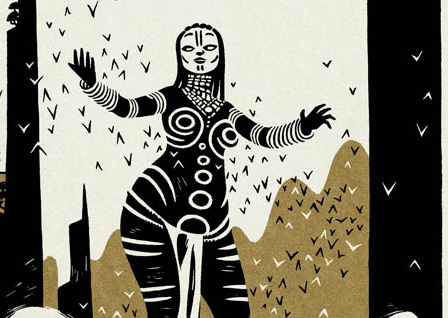
Fragile
Fouad Mezher
6 pages
Self-published
Read (here)
Lebanese creator Fouad Mezher's Fragile is gorgeously illustrated and is only 6 pages. It feels like part of the ancient mythos, a Cain and Abel story, two brothers or friends or rivals, the attempt to please a god who remains aloof to their volatile and objectifying interests. There are no words but there are word balloons. The story is ripe for interpretations both textual and metatextual.
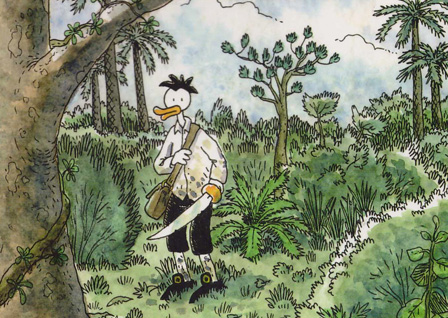
Bourbon Island 1730
Appollo and Lewis Trondheim
288 pages
First Second
ISBN: 1596432586 (Amazon)
A complex, narrative-weaving historical fiction and study in human nature and depravity, Bourbon Island 1730 was a lovely surprise for me. I will admit that despite my love for Usagi Yojimbo and affection for the work of Jason, I still shrink back from the idea that a comic featuring zoomorphs in the place of humans will likely be either serious or good. Bourbon Island 1730 of course punctures my prejudices by being both. It features top-notch storytelling as well as top-notch illustration.
The story is historical fiction that explores through side-stories the collapse of pirate-era on the Isle of Réunion (then Bourbon) through amnesty and the execution of Olivier Levasseur. I knew none of the book was actual history until reading the notes at the end. I just thought it was a good adventure story that took a moment of consider the moral and philosophical implications of the whole thing.
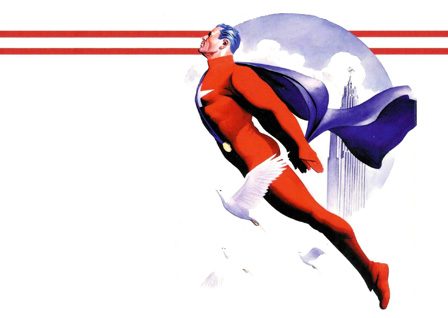
Astro City
Kurt Busiek and Brad Anderson
17+ vols
Wildstorm/Vertigo
ISBN: 156389551X (Amazon)
Busiek and Anderson's Astro City is probably the most compelling superhero world I've encountered. It's a world where the characters grown and evolve, where they grow old and fade away, where time exists, where their context is taken seriously and not just as story fodder and reader hooks (though there are plenty of hooks for the reader). Astro City is the first superhero world whose existence I could halfway believe in.
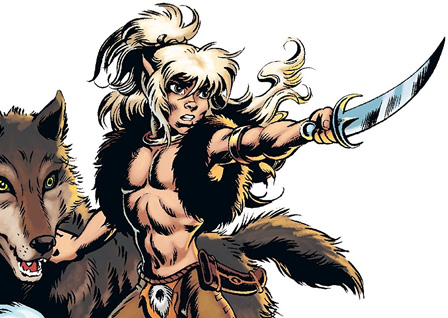
Elfquest
Wendy and Richard Pini
7 vols
Dark Horse
ISBN: 161655407X (Amazon)
It took me over 30 years to finally read Elfquest. I did so out of a sort of begrudging acknowledgement that I *should* read it - mostly since it's one of the those ones that haunts the skirt of the canon (such as it is).
I remember seeing Elfquest vols in stores back in the mid-'80s but by then I had fallen out of love with fantasy (having overdosed on D&D choose-your-own-adventure novels over the couple years prior), so seeing a black-and-white book with a bunch of cutesy elves on the cover didn't inspire interest. And sadly, while I never did ever recover my youthful interest in fantasy stories or worlds, I will occasionally dip my toe and see what's what. Fortunate that I did with Elfquest because really this is just pretty great comics.
The lowdown: a couple centuries ago (or more?), the high elves crashlanded on earth. They were a beautiful, peaceful, technologically advanced people with much to offer. Unfortunately, they ran into humans. If you've paid any attention to the US political landscape the last few years, you can probably guess what happens because we're obviously savages. Fast-forward centuries and the elves who survived the human/elf meet-cute have adapted to living hidden in the forest and also have wolf-DNA because somebody got all Zeus-y with the local fauna. Things happen and they flee to the desert where they find other living elves (with an entirely different culture). This makes them think there may be even more elves living out there and the quest (the elf-quest) to discover and unite the elven peoples begins). It's all pretty great.
Also, the Pinis play with social convention in interesting ways. Elves get their romantic hook-up on in one of two ways: 1) the falling-in-love way that you or I may know from decades of seeing the concept play out in film and television, or 2) recognition. Recognition is instinctual and has nothing to do with love. It's animal and base and undeniable. (There are actually physical symptoms similar to drug-withdrawl for declining to act on Recognition.) So you have couples who love each other and couples who have to be with each other even if they can't stand each other and then couples who love each other but then happen to Recognize with someone else and then it's basically agony all over. Fun stuff.

Murder Me Dead
David Lapham
Image
ISBN: 1632150794 (Amazon)
Steven kind of loathes his wife and her family. Except for his brother-in-law's wife who he's got a thing going with. So when he comes home late to find his wife hanging from the ceiling fan, he isn't exactly broken up over it. But now the family wants to pin the crime on him --> but he didn't do it --> but the detective thinks he did --> but he remembers Tara, the girl he crushed on in high school --> but trying spark a love connection in the week after your wife my have killed herself but may have also been murdered by you isn't a very good look --> but Steven is kind of a narcissist so he doesn't notice and so follows his old crush around like a creeper --> but she has a shotgun.
And then the story begins.
This is David Lapham at his 87%-David-Laphammiest. It's got his signature all over it but it's not as chaotic as Stray Bullets and not as blisteringly nutso as Young Liars.
201–210211–220221–230231–240241–250
251–260261–270271–280281–290291–300
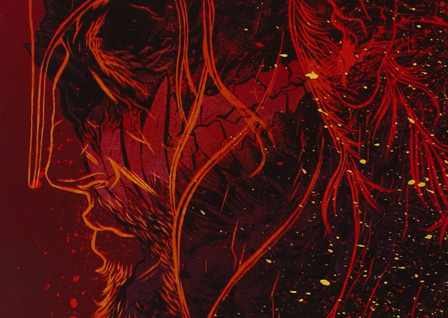
Beowulf
Santiago García and David Rubín
200 pages
Image
ISBN: 1534301208 (Amazon)
Probably just check out my review where I talk about the nature of adaptation, monsters, and the Christian mythos—and compare this edition of Beowulf with Gareth Hinds'.
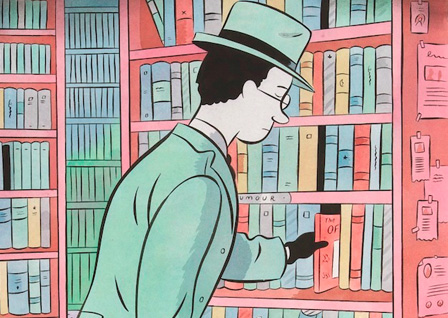
It's a Good Life, If You Don't Weaken: A Picture Novella
Seth
176 pages
Drawn & Quarterly
ISBN: 189659770X (Amazon)
This is a weird sort of book. It's a fictional story about a cartoonist who never existed, but it simultaneously uses real-life characters and masquerades as autobio. As fiction, it would be a compelling vignetter of a man whose life is a mess of self-delusion and self-destruction. As autobio, it's more just a sad look into a sad man's life and outlook. It's competently done and does a good job of pushing its metafiction.
Also I'm bitter that Gregory Gallant took on the mononym Seth. What did he do to earn that? And now, when I do stuff like Seth's Daily Graphic Novel Recommendation, I always have people assume I wrote It's A Good Life If You Don't Weaken.
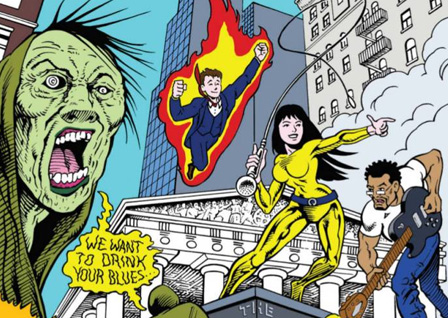
Theft: A History Of Music
James Boyle, Jennifer Jenkins, Ian Akin, and Brian Garvey, with Keith Aoki
262 pages
Duke Law School
ISBN: 1535543671 (Amazon)
One of my favourite things about Theft: A History Of Music is how it itself continually samples/borrows/swipes from verbal and visual pop culture while discussing the rampant history of the same between basically all musicians and composers for all time. Deliriously informative read. I had been aware that all music is borrowed/sampled/swiped from (or in polite company, inspired by) other pieces and performances, but Theft does a great job of offering examples not just from a particular period but from a wealth of periods. The book drops knowledge on you in a big way but is ultra-glib and entertaining while doing so. Takes what could be an otherwise pretty dry subject and keeps it light enough so that even the lowest common denominator (like me) can be carried along to its end.

The Interview
Manuele Fior
180 pages
Fantagraphics
ISBN: 1606999869 (Amazon)
People are seeing UFOs and lights and stuff. A man is separating from his wife. Things are falling apart and things are rebuilding. The future is a mystery until we get there.
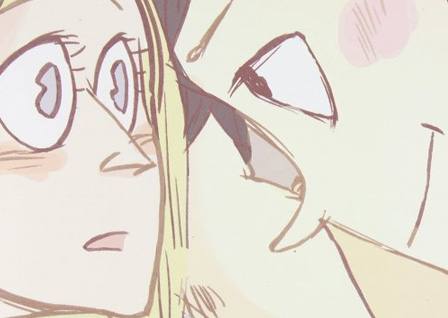
The Summer Of Blake Sinclair
Sarah Burgess Okay so there's Blake, right? This his book, this is his summer. He's kind of a cad or totally a cad. But people still like him, even when they're mad at him. Daisy, for instance, likes him even though she's totally mad at him. Because he won't go out with her even though they had sex that one time when she was drunk and all over him. Ruthie is conflicted. She likes Blake too even though she's sometimes mad at him. And then there's also Janey. She's Blake's best friend. I guess. But she doesn't like him like that. I guess. And she gets mad at him. But Blake, Blake likes Blythe. Sasha also likes Blythe. But kind of Ruthie. Maybe? I don't know. Things swirls and bubble and Blake's kind of a massive jackass but there's a reason he's kind of a massive jackass and maybe it's reason enough. But it probably isn't. Anyway, Sarah Burgess writes and draws this great four-volume series about 20yos and their shenanigan-filled summer. It's a lot of fun AND you can also read it online here.
3 vols
Self-published
Read here

The Oven
Sophie Goldstein
80 pages
AdHouse
ISBN: 1935233335 (Amazon)
The Oven is a well-wrought glimpse of greener pastures and how two people can love each other and still fall apart. It's a utopian world where genetic expression is regulated and couples with bad genes cannot procreate. Eric and Syd think they want a baby, but Eric has a gene for acne so they leave civilization for a hippie commune so that they can breed it up unrestricted. Neither are sure they want this, but they want to give it a shot. It's not easy and by the time they realize that their eyes were bigger than their stomachs for this new lifestyle, it's too late to make a decision that won't destroy something they've built together. Good, simple, worthwhile.
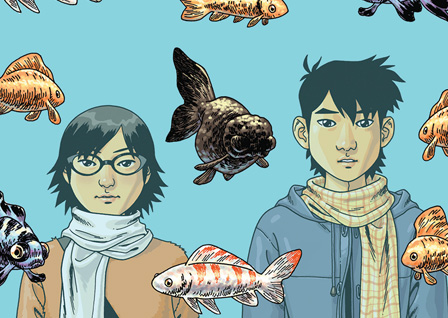
Same Difference And Other Stories
Derek Kirk Kim
96 pages
Top Shelf/First Second
ISBN: 1596436573 (Amazon)
This was one of the first graphic novels I read that made me believe in the form as being a potential vessel for down-to-earth emotive stories that didn't trade heavily on visual hyperbole. I think Kim hit the scene too soon; it wasn't ready for him. I think if he landed for the first time today, the comics world would be much better prepared for the wonder of his books. Or maybe I'm just hoping good things on the comics-reading populace that really isn't merited at all. Maybe we would fail him again.

The Complete Don Quixote
Rob Davies
296 pages
SelfMadeHero
ISBN: 1906838658 (Amazon)
Davis may be the perfect person to illustrate an adaptation of Cervantes' classic. Timeless is usually a wholly unremarkable adjective, but Don Quixote is funny, raucous, ridiculous, still on-point in all kinds of its social observations, and basically does every meta- and fourth-wall-busting trick centuries before you thought people invented the idea. Rob Davis' drawings of the errant knight-errant (and squire) are deeply reminiscent of Picasso's and so maintain a certain comic gravitas.

reMIND
Jason Brubaker
2 vols
Coffee Table Comics
ISBN: 0983114900 (Amazon)
Religion in literature is hard to do well. One of the greatest struggles for a literary work concerned with faith in the unseen is negotiating that breach between Why Should I Care and Hey You’re Preaching At Me. The borderlands that lie between the two are filled with deep and often satisfying conversations—or at least ones that help readers to recognize the breadth of perspectives that naturally hover across the human landscape. And then consider even those works that don’t press us to think seriously about what it means to be human in the face of all else that exists—if they resonate with us without dogmatizing, we tend to appreciate them a bit more. And this is a phenomenon unique to the realm of fiction.
When picking up a brick of text called Beliefs Of The Coptic Church, one would likely be disappointed if the book hemmed and hawed and only vaguely laid out what the Coptic Church might believe. We not only excuse blatant and direct reference to a particular theological dogma when reading a reference work discussing that dogma’s merits—we expect it. Fiction, on the other hand, long ago ceased its comfortable position as a vessel to convey a distinct and particular moral. Such overtly displayed lessons as found in “The Fox And The Grapes” are largely seen as reliquary, a nod to a long-passed and primitive kind of reader. Nowadays we, for good or for ill, are embarrassed by fictions that wear their heart too immodestly exposed.
At least we are when we’re not members in good standing of the particular choir that is being preached to in a work. Christians who read Doug TenNapel’s CreatureTech seem a lot less fidgety around the book’s very very Christian climax. Atheists and those who’ve fled fundamentalist Christianity seem much more willing to overlook Craig Thompson’s rather weighted evaluation of churchgoers in Blankets. The problem with each of these works is that we feel a little too handily that we are being preached at. It’s an uncomfortable thing: first because whenever the author’s agenda overwhelms the story, we lose sense of their world being a real kind of place; and second because fiction is so well suited to discussion that most contemporary readers will find its repurposing for monologue a bit jarring.
Happily Jason Brubaker’s reMIND doesn’t, I think, fall into this trap. It has things to say about belief, questions to ask, but it does so with enough humility that one can easily forget that it was even about a question of faith. And really, maybe it’s not about that. Maybe religion is just part of the world he’s unveiled for the space of this story and maybe the book is about living, and so naturally treats our beliefs in unseen possibilities.
In any case, while Brubaker employs direct reference to a divine entity ("The Invisible") and even some less overt clues as to whom the Invisible might best represent, he keeps it oblique, allowing readers to make their own decisions about his characters’ cosmogony. In CreatureTech, Doug TenNapel wallops readers over the head by having his non-believing protagonist actually flatout encounter the divine and witness crucifixion. It’s a crude hammer the size of Mjolnir that TenNapel uses to pound two-penny nails into an Ikea version of faith and belief. Brubaker’s path is more thoughtful and more considerate and more enjoyable and hits less like the eighteen-wheeler of belligerent proselytizing than TenNapel’s. reMIND’s characters have no direct encounter with the divine. No vision. No dream. No voice in the midst of fire or storm. Their Invisible remains invisible and if they continue to believe, they do so out of faith, out of a hope in things not seen.
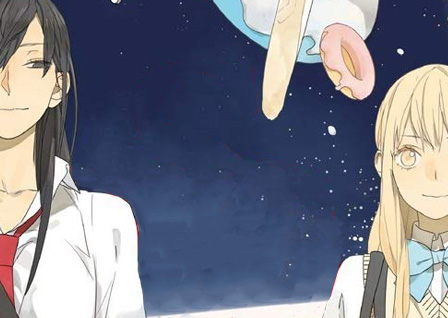
Their Story
Tan Jiu
webcomic
Self-published
Read here
This high school romance between two teen girls in China is still rather one-sided in the romance department (in that one of the girls is deep in the crush of new love and the other is just happy to have a new friend), so there's lots of that dramatic tension that naturally draws from the Unrequited Love engine. Also, Tan Jiu keeps her lead charming and emotive, so it's a pleasure to watch her do whatever it is she's going to do at any given moment. This is so far only available on the internet, but as soon as there's a physical product, it will enter my library.
I'm not super familiar with the Chinese comics scene. That is, I'm not familiar at all. I've read (possibly) five Chinese comics ever. I don't know where Their Story fits within the industry there, but if a story as buoyant and bubbly and fun and straight-up enjoyable as this is at all common there, then the Chinese comics industry must be one of the best things ever. If it's not, then at least they've got a great example of where to aim. Their Story is pretty great, even if it eventually starts losing steam (rumour is: because of Chinese censors though I can't pretend to know the truth of that).
201–210211–220221–230231–240241–250
251–260261–270271–280281–290291–300

How To Be Happy
Eleanor Davis
152 pages
Fantagraphics
ISBN: 1606997408 (Amazon)
Eleanor Davis spends almost the entirety of How to Be Happy offering a delicious exploration of the tie between utopia and dystopia, between paradise and infernal paradise. It’s a fine balancing act, funambulating between hope and despair, but she travels back and forth the distance with sure feet. On only two occasions amongst the collection of shorts does Davis overtly invoke the concepts of utopia and dystopia (once even going so far as to use the word dystopia itself), but for the most part she keeps the theme as mere atmospheric hum. One could be forgiven for not using the idea of earthly paradise as a governing filter for the work if it weren’t for the book’s title, How to Be Happy.
Utopia, the word, is derived from two pieces. The first, eu-, means “good” and sees itself in common English use in euthanasia and euphemism. The second, topos, means place and we see this term crop up in the cartographic practice of mapping topography. Utopia, then, is a good place, a kingdom of peace and security. Of happiness. A society coming to a place of peace via learning how to be happy is an essential piece of utopian presence. Without a general sense of happiness (no matter how broadly we define happiness) amongst the beneficiaries of a society, we have no utopia.
But while Davis occasionally speaks to the books’ ruling concept in terms of societal shifts (especially in the second short, “Nita Goes Home,” and on a smaller paleosocietal sense in the first story, “In Our Eden”), she mainly concerns herself with examining the attempts to escape dystopia in the detritus of much smaller-scale kingdoms. A boy seeks to perfect the world of his experience by maintaining ultimate control over a younger boy’s interactions with him by a mix of psychological and physical aggressions (“Thomas the Leader”). A musician exercises a pacific effect over the animals of the wilderness through the sound of his guitar and seeks to bring an animal woman into his domain through the same tools, even against her nature (“Sticks and Strings”). A woman submits herself to the tutoring (governance) of a personal growth guru in order to find peace and joy in the world through tears (“No tears, No Sorrow”). In another, a young man becomes friends and more with a young woman because of his ardent interest in the woman’s father, only to be discovered by the reader (in a perfect fourth-wall moment) capitulating to the woman’s sexual advances in opposition to What He Really Wants (“Summer Snakes”). There are other stories, but the final narrative note seems to underscore the thesis (and echo in a way Vonnegut’s own utopian solutions), suggesting that the human mind in its present state is the chief obstacle to utopia and we are better off freeing ourselves from its dystopic tyranny. She leaves the means to that end unstated and amorphous—whether by suicide or pharmaceutical intervention or altered mindstates or metaterrestial intervention—and this story collection is probably more palatable for the ambiguity, because while we’re happy to be given an inkling of her answer, the American way is to bristle at any lifestyle solution that is offered as anything close to an actual suggestion.
How to Be Happy appears as a dialogue or argument between a handful of ideologies unaware of each other’s presence. They don’t interact directly and orate as if theirs was the only voice in the room. Davis emphasizes this sense by illustrating many of these episodes using entirely different techniques and employing entirely different styles. One story appears as a colourful screenprint with absolutely no linework. The next could have been drawn with a Uni-Ball and features an oversaturation of watercolours. One has very detailed illustrations with strong negative space and sepia tones, another is washed and gentle with mysterious and lovely creatures, another is straight black-and-white with drawings that call to mind the childhood adventures of Nate Powell’s Any Empire. And there’s more. Davis is clearly talented and diverse. If one wasn’t aware, it would be easy to mistake Davis for the collection’s editor and the individual stories as the anthologic production of a number of artists

Sumo
Thien Pham
112 pages
First Second
ISBN: 159643581X (Amazon)
At its most basic and pared-down, Pham has written a graphic novella whose content is perhaps enough only to fill out a short story. Scott is a former American football hopeful who, in the wake of losing that dream and the girlfriend who came pre-packaged with it, is attempting to rebuild his life as a sumo wrestler in Japan. Pham isn’t interested in Scott’s whole story but instead approaches him in the first (and therefore most important) of many do-or-die moments in his career: just as he prepares for his final try to make the transition from rikishi to sekitori (that is, from lower division to upper). Sumo's entire present tense may only occur over the space of a couple days, but it’s clear that Pham is putting forth a representative pericope of a whole life lived. What occurs in Sumo's narrative span is Scott’s day of judgment—on this story will hinge our evaluation of Scott as a whole person. This is his past, present, future—weighed on the scales of the readers’ subjective evaluation.
For analysis of Pham's formal experimentation in the book (which is really cool), check out my full review here.

Horimiya
HERO and Daisuke Hagiwara
10+ vols
Yen Press
ISBN: 0316342033 (Amazon)
Omigosh, this is book is the cutest thing ever. Basic idea: The story is about 1) Hori (the girl), a gorgeous high-achiever who outside of school wears sweats, no makeup, etc (basically she is a real person and is not 100% made up 24/7 but that is weird either in Japanese cultural or maybe just in Japanese pop cultural confections like this comic) and about 2) Miyamura (the boy), who in school appears a gloomy four-eyed otaku but outside of school is a good-looking, pierced-and-tatted dude who catches girls' eyes. They accidentally discover each other's real selves and it goes from there. They become friends and help keep each other's other selves' secret from the swirling populace of the highschool dramamill. And then the boy/girl thing starts to happen.
Horimiya, the book's title, is a portmanteau of Hori and Miyamura. Kind of, I guess, like Brangelina.
Among the neat things is that Horimiya is a progressive romance (i.e. one that moves beyond the will they/won't they question and explores their life as an established couple and beyond). It doesn't happen right away and the book follows their awkward courtship before courtship, the sort of mutual friendzoning in which they're each terrified to find out exactly what they mean to each other—but it moves beyond that and into the struggles, joys, and rhythms of life as a couple.
It's good. It's real good. And I laughed a lot. The artist's ability to capture expressions is great.

Our Toyota Was Fantastic
Boulet
4 pages
Self-published
Read here
Boulet here draws an affecting remembrance of what it was like riding in the back of a car during a nighttime roadtrip, paying careful attention to how much of a prominent character that Light plays in such circumstances.
Boulet waxes nostalgic but not, I think, treacle. And in his reimagining of that world, I find reference to my own experiences. In this, Boulet not only makes a competent comic but offers his reader something more valuable, an unbidden chance to trigger (hopefully) warm memories from childhood, when the world seemed so different from how it looks to the grown and matured human.
This will take between 1 and 2 minutes to read.
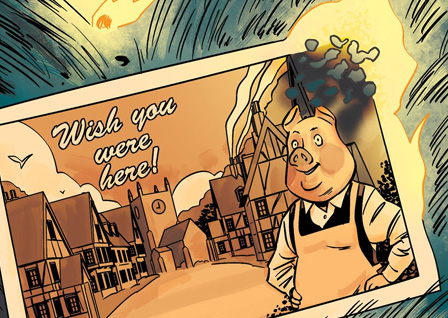
Wild's End
Dan Abnett and INJ Culbard
3 vols
Boom
ISBN: 1608867358 (Amazon)
I'm not super into books about zoomorphs (my longstanding love for Usagi Yojimbo is a notable break from my genreal rule), and I've read enough revamps of War Of The Worlds to last me a lifetime (one even written by Culbard's own occasional creative partner, Edginton). I would have left Wild's End unread (despite praise from elsewhere) had it not been for Culbard's involvement. (I've been a fan of his illustrative storytelling since reading his and Edginton's adaptations of Sherlock Holmes nearly a decade ago.) And happily, Abnett and Culbard pull something magical out of their hat. This is perhaps the first time that I've been excited by an alien invasion story since I read the original War Of The Worlds in fourth grade. Their cast of characters is luminous (sometimes literally) and it's their stories that give life and meaning to the soulless invasion of these foreign beings.
Also, and this is something remarkable. I pretty much never read the prose extras that some authors will include in the back-matter of their comics. I think I read a paragraph and a half of Alan Moore's backmatter for one of the League Of Extraordinary Gentlemen issues. That kind of stuff really knocks the wind out of my comics-reading sails. I'm here for the concatenation of word and picture. It's in that chemistry that I find my joy. And I don't know what prompted me to give it a shot, but I devour the back matter in each chapter of Wild's End. They are superbly accomplished and they add so very much to the experience of the story and these characters that the book would feel hollow without them.
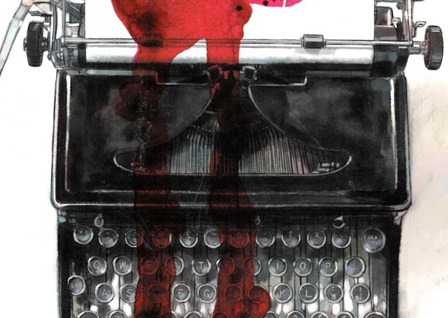
The Fade Out
Ed Brubaker and Sean Phillips
2 vols
Image
ISBN: 1632159112 (Amazon)
The Fade Out is a good, well-plotted, well-drawn murder story from the golden age of Hollywood. Clark Gable makes an appearance. It's basically exactly what it says on the tin.
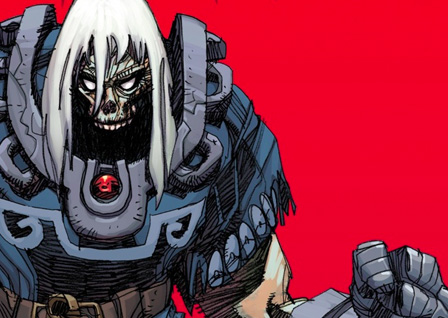
Ragnarok
Walter Simonson
2+vols
IDW
ISBN: 1631400681 (Amazon)
Walter Simonson wrote and drew (to me) the very best Thor comics of all time. The marvel series always left me unaffected and often seemed too hokey. Then Simonson picked up the reins back in the early '80s and the book blew up. Thor was interesting, grand, noble, and larger than life. Simonson had a knack for the character and for his world. That run of comics (from Thor 337 through 382) would be the only time I truly enjoyed the character.
When I heard that Simonson was doing a new Thor book, I was interested. When I heard it was unrelated to his Marvel work, I was even more interested.
I didn't know what to expect but I did expect brilliance. And in the first vol, SImonson ... doesn't quite deliver. It's fine. It has some great art. It has some interesting concepts—e.g. Thor is basically undead after hundreds of years and has no lower jaw. But it was missing some of that spark that made me fall in love with Thor in the first place. As it turns out, this is because vol 1 is essentially prologue. It's all set-up.
Vol 2 delivers on that set-up and makes me so happy to be following this book. In honesty, probably vols 1 and 2 together form the prologue for the rest of the book. Or maybe Act One. I don't know how long this is intended to be. In any case, these 2 vols form a complete story that seems to be just the start of something epic and hopefully long and almost certainly amazing.
For synopsis: Thor has been asleep and imprisoned for a long time. The gods are all dead. Darkness and fell powers rule the earth. Ratatosk tricks someone into waking Thor—and now his long Monte Cristo-like quest for vengeance and mourning begins.
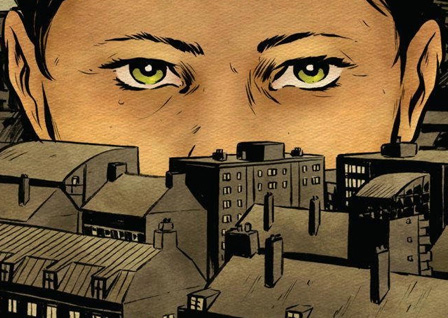
Second Thoughts
Niklas Asker
88 pages
Top Shelf
ISBN: 1603090371 (Amazon)
Second Thoughts is nearly a decade old now. I didn't hear much about it at the time but picked it up about five years ago in a Top Shelf sale. It's good. Probably even really good. It's layered with meaning and purpose that doesn't begin to unveil itself until after you've gotten to the end. The experience of reading can be deeply disorienting and you'll likely think several times, "Wait, is this a mistake?" Or even probably, "Oh what a ridiculous coincidence!" But then as everything reveals itself, you can sit back and think instead, "Oh, hey, that was actually pretty clever. And oh, wait, so that's what Jess was doing with her writing. Neat!"

Written In The Bones
Christopher M. Jones and Carey Pietsch
8 pages
Self-published
Read here
While not antipathetic to dogs, I am not what anyone would consider a dog person. One of the big surprises for me then was this mini by Christopher M. Jones and Carrie Pietsch, about a dog father mourning the loss of one of his sons and wondering at the apparent ambivalence of their owners. It's a solid story—great, really—and it shows off both creators' talents well.
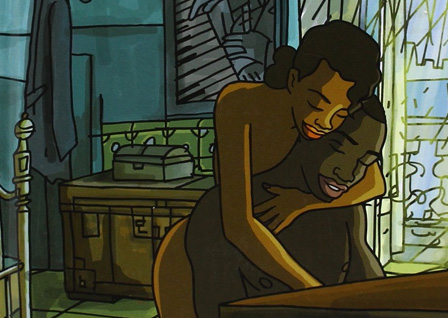
Chico And Rita
Javier Mariscal and Fernando Trueba
216 pages
SelfMadeHero
ISBN: 1906838291 (Amazon)
The writer and artist of the film, Chico & Rita, adapt their story to the graphic novel format, sacrificing lush music for lush pages. The book bursts with colour and passion of line.
The story it tells is not an uncommon one. A man and woman with tremendous chemistry and great desire for each other are nevertheless terrible at communication and loving each other in the tangible non-sexual ways that undergirds any healthy relationship. Throw in the tragedy of closed borders and other actors that conspire obliviously to keep the two from each other, and you've got your standard star-crossed lover equation.
Quiet, introverted readers may find the tempestuousness of the relationships of these characters novel and hyperbolic (I was personally pretty gobsmacked at the brashness of the things said and done), but others may see themselves and their family well-represented.
In any case, open the book to take in the art for it is janky and beautiful.
201–210211–220221–230231–240241–250
251–260261–270271–280281–290291–300

Broxo
Zack Giallongo
240 pages
First Second
ISBN: 1596435518 (Amazon)
The titular Broxo (of Zack Giallongo’s Broxo) is not the main character of his own book. That distinction goes to Zora, a warrior cut more from the mold of Miyazaki princesses than from Disney’s pampered-chef variety. She’s no fan of slumming in the wastelands, but she’s doing her bit to support her family’s vision of uniting the five clans under a single purpose—and because that end requires means so unappetizing as crawling the wastes, that’s what she will do. She’s pretty badass like that. Plus, she has awesome little decorative wings on the side of her headband and she’s easily the first character I’ve ever seen pull that one off. (Sorry Captain America. Sorry Hermes. Sorry Hawkman.) She’s also smart, tenacious, and maybe not so competent with a sword as the loner she meets, a boy king named Broxo.
Broxo opens with Zora cresting a plateau in search of the Peryton clan so that she might deliver the news of unification, that all the people of the Penthos might once more be as one. She finds instead a pretty shabby place, a land mostly of gloom and murk—deserted save for a small few inhabitants, each with their own things going on. One of these is Broxo, and the remainder of the book dwells on their interactions and adventures. These, despite their clash of cultures and the gathering darkness, are a joy to follow.
I’ll tell you this now: the fact that there isn’t presently a sequel to Broxo rushing from the printers to the publisher on its way to a speedy distribution breaks my heart. Because I want more of these two. I want more adventures that will make me hurt all over vicariously (even if the characters themselves seem immune to my own current frailties). Giallongo has charmed me.
A large part of Broxo's depth is founded on its principal two characters. Both Zora and Broxo are mixes of strengths and weaknesses, a combination whose powers come to outweigh its inadequacies. Zora is brave but foolhardy and reckless. She’s good with a bow and okay with a sword. She’s driven by her ambitions but is a bit ethnocentric, leaning on the belief that her civilization (the one doing the uniting) is the superior and that what’s left of Broxo’s betrays barbarian savagery. To usurp Avatar, she’s got a lot to learn before she’s ready to unite anybody.
Broxo is himself a strong fighter, wily, and at home with the dangers of the plateau, but he’s ignorant of many things. He’s weighed down by a history he only partly knows and a past he’s largely forgotten. He’s far from socialized and despite his guileless overtures, he trips a number of social blunders that make working together with Zora a difficulty. He has a larger responsibility than he’s aware and swaggers a bit more than he deserves.
The beautiful thing about Broxo is watching these two strong figures bend and snap and bend again in order to preserve their lives, understand each other, and ultimately evolve closer to that personal state that was previously sequestered in the realm of Mere Potential. As in any realistic growth situation, there’s friction and forgiveness. It’s a good and well-thought-out relationship and not one I expected to find in what is essentially a Conan-esque tale of adventure, fantasy, and zombie apocalypsis.
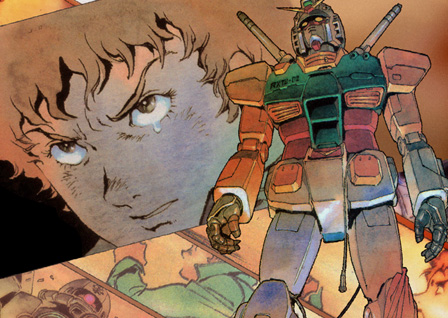
Mobile Suit Gundam: Origin
Yoshikazu Yasuhiko (translated by Melissa Tanaka)
12 vols
Vertical
ISBN: 193565487X (Amazon)
I'd never read or watched anything Gundam before, so I thought, "Y'know, I'm about ready then, aren't I?" So I thought I'd pop in to what looked like an obvious starting point, Yasuhiko's revisitation of the first Gundam story. (Also the last thing I read by Yasuhiko was Joan, about 15 years ago, and I thought the art in that was primo.)
There was not a lot of reason to expect that I'd like this. After all, I don't like mecha, don't bear any fondness for action comics*, and care so little for science fiction that I usually have to be specifically recommended a sci-fi story before I'll pick it up. So when despite my prejudice of personal taste, I found myself really getting into the book, you know there's something special going on.
In Origin's case, that something special is the visual storytelling. Yasuhiko has a masterful way of illustrating a page. The base meat of this story is on a level of what I was familiar with from watching Robotech in junior high (different details but the stories tread a lot of similar ground - which makes sense as Robotech obviously owes a lot to the earlier Mobile Suit Gundam), but Yasuhiko writes with an adult sensibility that helps bolster his groundwork. The real joy though is in his drawings. Yasuhiko uses ink washes marvelously to add emotional tone or represent fragmented memory. And he does that kind of '70s/'80s sort of manga thing where he leaves out things like eyes or half a face or whatever other details he feels are extraneous in a given moment. It sounds weird and I haven't seen the technique in ages but man does it work well. (At least in his hands.)
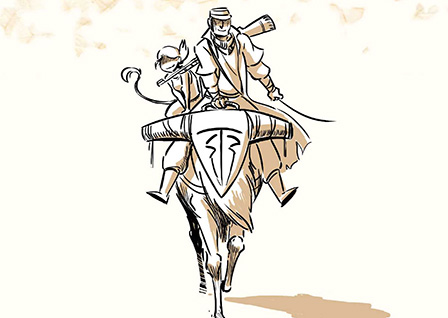
City In The Desert
Moro Rogers
428 pages
Self-published
Read (here)
Due to a bizarre sort of mismanagement by Archaia and then Boom Studios (which acquired Archaia) that kind of pissed me off at the time, Rogers' book (broken into an awkward trilogy presumably for publisher dollars) never saw publication of its third part. So I had two gorgeously produced books that would never be complete.
Fortunately, Rogers has since self-published the entirety in a single volume (as she had originally intended). And it's a very good story. Mythic and sweeping and exciting and sad. Lots of monsters, both human and the normal kind.
Also: her dad created Samurai Cat, if you remember that from the '80s.

Jane
Aline Brosh McKenna and Ramón K. Pérez (lettered by Deron Bennett)
224 pages
Archaia
ISBN: 1608869814 (Amazon)
As an adaptation, Aline Brosh McKenna's interpretation of Jane Eyre as a contemporary story does exactly what adaptation is meant for. Not slavish reenactment but lucid extrapolation. There are plot points that have been excised or revised, all to the end of giving Bronte's masterwork a new spin and a new chance to move and thrum.
It's a delightful work—and one that wouldn't have succeeded half so well were it not for Ramón K. Pérez' illustrations and artful storytelling. A good artist might have made the story stand. A master like Pérez makes it sing. His choice of frame, of camera, of action is all amazing and breathes life into a story that many of us know quite well by now.
This is one of the most beautifully drawn books I've read this year in terms of pure cartooning talent.

Sharaz-De: Tales From The Arabian Nights
Sergio Toppi
224 pages
Archaia
ISBN: 1936393484 (Amazon)
I’m an artist and the son of an artist. I do my fair share of work—mostly illustration and mostly for online publications. But my father, he was a career artist in the real sense. He pruduced phyical objects for display and sale. Ceramics and Chinese brush painting. The point is: we’re both all about the aesthetic value of human creations, no matter the medium. He likes my work and I like his and whenever one of us runs into something sublime, we Facebook each other and say: “Hey. Look at this. It is worth your time.”
So minutes after cracking open and flipping through my edition of Sergio Toppi’s Sharazde: Tales from the Arabian Nights, I had placed an order for a second copy—this one to ship to Europe where my father lives. I didn’t want him to see scans of Toppi’s work online. I didn’t want to message him photographs of these drawings. No, he needed to behold this gorgeous collection of art in person and I would not wait for him and my mother to fly out to visit in the summer. I needed to share this now. Or as close to now as shipping to Europe could approximate.
And I wasn’t disappointed. His reaction very much mirrored my own. He was just as blown away and gob-smacked as I was. Being a genuine surfer hippie from the genuine surfer hippie days, the word “stoked” might have held some play as well. There was joy, there was adulation, and there was awe. In short, Toppi’s work received from my father (and from myself) exactly the reaction his work deserves.
Because, oh man.
I’ve been describing Sharaz-De in terms of its art and even think of it primarily as an art book—something to display for guests—rather than as a comic book or graphic novel. It has a story and it has writing, but those things really seem mostly in place to provoke Toppi to draw something interesting and amazing and earth-shatteringly beautiful. Honestly, I may never read the book’s story ever again. And that’s fine and I don’t mind. I certainly don’t feel slighted. This is an amazing book and worth every penny I spent on it.
Part of my ambivalence toward the book’s narrative aspect may be that it’s an adaptation of a kind of literature I generally avoid: the fable. Toppi is adapting some of the stories of Scheherazade, the ken of which have long filtered into our societal consciousness. Even if one is unfamiliar with the tales of the Arabian nights, the structure and morals are ubiquitous. Characters who are dishonest, ungrateful, and oath-breakers meet untimely and often terrible ends. If you make a promise to a strange being who gives you wonderful fortune with a single stipulation, whatever you do, don’t blow it where that stipulation is concerned. These fables are common across cultures—so if you’ve read European or Asian fables, you know the drill as well. Just desserts figure prominently.
Toppi doesn’t do any astounding narrative acrobatics with these fables. They are told in rather straightforward tone. They are there and they are faithful and not much more. But as I said, when they were the genesis for such wild visual imaginations, it really stops mattering how faithful the narrative adaptation is. I’ve included some photos of the art, but please don’t imagine these do anything near to approximating what you’ll see in Sharaz-De. It’d be like a guy carrying a faxed photo of his girlfriend in his wallet. These pics are merely sad facsimiles of the crisp printing that inhabits the paperscape of Archaia’s lush, large book.
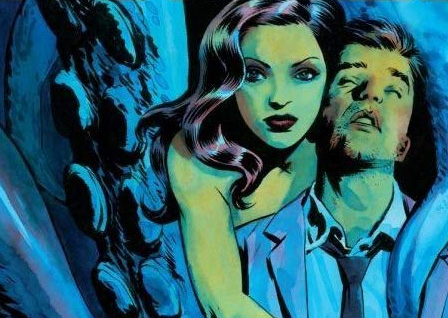
Fatale
Ed Brubaker and Sean Phillips
5 vols
Image
ISBN: 1607069423 (Amazon)
While Brubaker and Phillips are probably most celebrated for their crime series Criminal, I really do love their bid at pulpy BPRD-style cosmic horror adventure. While telling the story of the harrowing of nearly immortal Josephine, the book pops back and forth through history giving value to the present by illuminating the past. Jo can make any man do what she wants and every man wants her, but there are more sinister powers at play—cultists who want to bring about the entrance of some sort of probably Ogdru Jahad thing and they require her ritual sacrifice to do it. Fatale follows Jo and the men who follow Jo as she tries to break free of the curse once and for all.

Backyard
Sam Alden
208 pages
Uncivilized
ISBN: 1941250033 (Amazon)
In Backyard, Alden's illustrations are at probably my favourite point in his development. He's still using simple pencil like in Hawaii 1997, and his shadows and light are still wonderful, but his use of detail is more striking. And even years later now, I can't get that scene in the rain out of my head.
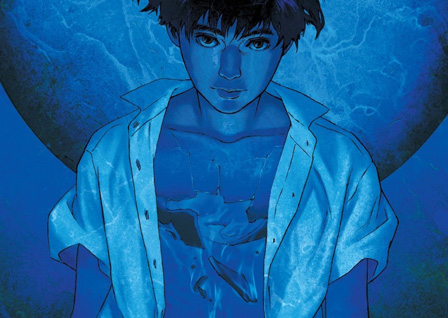
Tropic Of The Sea
Satoshi Kon
236 pages
Vertical
ISBN: 1939130069 (Amazon)
n this older work Kon only lightly treats the infringement on reality by the mysterious, but it’s still present and essential to the foremost question of the protagonist’s identity. Yosuke is the hesitatingly apostate son of a family of mermaid priests. Yosuke’s grandfather is a true believer, though he has passed his priestly duties on to his son. Yosuke’s father has never believed but, as may happen, an additional trauma turned his faithlessness into a light kind of antagonism. Yosuke struggles to make sense of strange dreams or visions or memories that may validate his grandfather’s faithfulness. He feels himself agnostic, but the intrusion of the unexpected may prove his unbelief inadequate.
Tropic of the Sea is more forthright in its use of the uncanny, making the supernatural impossible to deny—by tale’s end, none of the characters remain skeptical. That’s a little bit too bad and Kon will happily play cards closer to vest in the future, but the story’s still engaging and stands well as a solid mermaid story. In fact, though originally published in 1990 (amusing counterpoint to Disney’s neutered, feckless Little Mermaid), Tropic of the Sea's US publication in 2013 marks a bit of serendipity. Kon’s mermaid, though substantially different in realization, rides similar cultural waves as last year’s beautifully wicked Sailor Twain. Mermaids in Tropic have priests that honour them daily because they are dangerous. They don’t sing about life above the waves. They don’t play and frolic. They are demigods and their involvement in the world can be a joy or terror. Sailor Twain's South was a beauty capable of great horror, but Tropic's mermaid is a horror capable of great beauty. It’s rather nice to see these powerful, non-pacified visions of the mythic see light once more.
on’s art here is interesting, a cross somewhat between his later animation style and the over-detailed charm of Katsuhiro Otomo’s Akira. I’m not sure how deeply indebted Kon is to Otomo for his technique in these early efforts, but I wouldn’t be surprised if the influence was heavy. Tropic's character art (shadowing, line dynamic, etc.) could have been drawn by Otomo himself but for one distinction: Kon’s figures aren’t so stumpy as Otomo’s. In Akira, Domu, and Mother Sarah, everyone looks a little squashed. It’s a part of Otomo’s signature and that’s fine. But when we see the proportions of Kon’s characters (in terms of limb and torso length), it becomes apparent how much more natural Otomo’s characters could have appeared. I’d be interested to see how Kon would have drawn a manga circa 2005 to see if his style truly changed or if the simplicity of his anime works was merely due the limitations and requirements of the medium.
Tropic of the Sea, while especially delectable for fans of Satoshi Kon, is still entirely worthwhile as a standalone fable of science vs supernature, of technology vs the unknown. It’s fascinating to see Kon’s favourite themes in evidence even in this early work and I’m grateful that Vertical took the initiative to bring this to English publication at last. Kon is one of our era’s creative treasures and any chance to see his hand at play is a fantastic opportunity. I was glad not to miss it.

Erased
Kei Sanbe
4 vols
Yen Press
ISBN: 031655331X (Amazon)
Erased is a murder mystery but also a time travel and let's change history story. And also a hey-while-I'm-in-my-fifth-grade-body-maybe-I'll-start-a-sweet-romance-just-cuz story. But that's not as weird as it sounds. Or yeah it is, but it's played pretty innocently and it's all kind of sweet and oh man WHAT DID I READ??
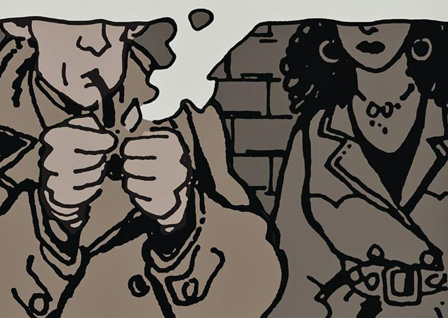
Fog Over Tolbiac Bridge: A Nestor Burma Mystery
Jacques Tardi (adapted from Leo Malet)
120 pages
Fantagraphics
ISBN: 160699705X (Amazon)
Tardi put out a bunch of gritty adaptations of gritty crime stories and this is one of them. Fun stuff if that's your bag.
201–210211–220221–230231–240241–250
251–260261–270271–280281–290291–300
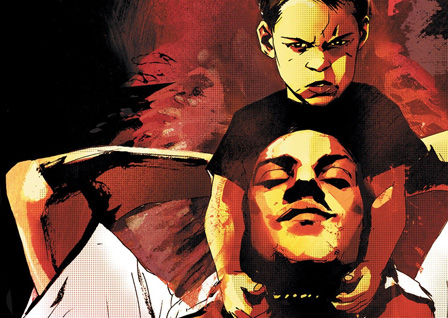
Scalped
Jason Aaron and R.M. Guera
10 vols
Vertigo
ISBN: 1401250912 (Amazon)
Crime stories set on a reservation in the US. Solid stories, fair writing. I don't really care for Aaron on superhero books, but he finds a good groove in the crime genre.
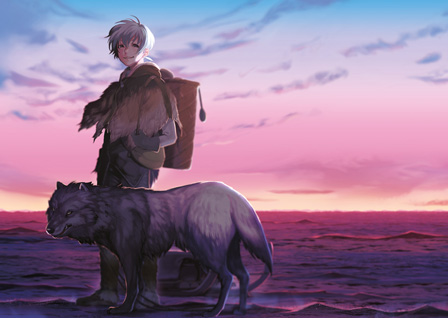
To Your Eternity
Yoshitoki Oima
9+ vols
Kodansha
ISBN: 1632365715 (Amazon)
I wouldn't doubt if Oima came up with the idea of To Your Eternity to answer a bet with an editor speculating just how many times she could devastate readers. The very nature of To Your Eternity (the story of an immortal who survives generations and generations) means that any character beyond the protagonist that you get attached to is going to die. 100%. It's a sure thing. If that bums you out too much, don't read stories about immortals. I'm still trying to figure out where I come down exactly on the series—as I loved several of the earlier arcs, but I didn't at all care for the most recent one. Still, even the one I didn't enjoy was still interesting and did fascinating things for the book's future direction.
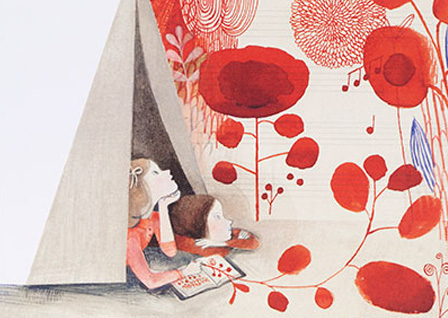
Cloth Lullaby
Amy Novesky and Isabelle Arsenault
40 pages
Abrams
ISBN: 1419718819 (Amazon)
A pretty, accessible biography of Louise Bourgeois, a weaver of tapestries and sculptor of spiders.
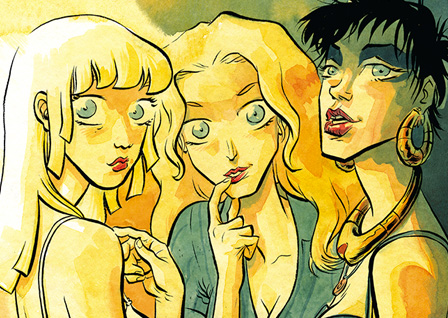
How To Talk To Girls At Parties
Gabriel Ba and Fabio Moon (adapted from Neil Gaiman)
64 pages
Dark Horse
ISBN: 1616559551 (Amazon)
HTTTGAP is gorgeously illustrated and is an adaptation of a Neil Gaiman short story. It's basically this guy talking about a night he had at a party 30 years earlier as indicative of how tough a time he had talking with the opposite sex. His narration portrays them as alien creatures, lighting upon the earth as a kind of vacation from their celestial travels. It's amusing. Some people have read the story and interpreted in some sort of twist where the girls being talked to at parties are not actually human girls. I would encourage the reader away from these interpretations because ....
You know what, skip the rest if you haven't read the book and are averse to SPOILERS (even though it's not the kind of book that can really be spoiled).
The point of the story is to show how alien girls are to this kid. He doesn't understand them or how to talk to them, but he realizes this so that's why even though they're telling him all this crazy stuff, he doesn't bat an eye. The neat thing about the story is that aurally and visually, everything points to the girls being aliens but all that is just to help the narrator explain how he felt about girls 30 years ago. The idea of the story isn't that they *are* aliens but that they might as well be aliens.
That reading was basically the only way the story worked for me.
1) There didn't seem to be any other reason to reveal the alien nature of the girls in the very first conversation save to later turn that on its heads.
2) There didn't seem to be any other explanation for why narrator was so completely cool with them being aliens.
3) This is a guy thirty years later telling a story and making something mundane seem fantastic; he's heightening all the right elements apocalyptically to underscore his thesis.
4) It's a much much much more interesting story if the girls are normal human girls and it's just the telling of the story that makes them into aliens. Much more thematically rich.
5) If the girls are just girls, everything becomes relateable. If they're aliens, everything is unconnected to reality and especially Vic's terror and flight doesn't really matter at all.

Beast
Marian Churchland
152 pages
Image
ISBN: 1607061473 (Amazon)
Churchland's retelling of the faerytale is weird and spooky. It preserves the otherworldly unapproachability of the beast without ever sacrificing that danger for the handsome prince (Disney's greatest misstep in their version). The beast and his story remain creepy, sinister, and alluring throughout.
In this version of the story Collette, a low-tier artist (a sculptor with no prospects) is hired to sculpt from a luscious piece of marble the likeness of her benefactor. She is the belle and he is the beast and her surroundings are the opposite of enchanted.
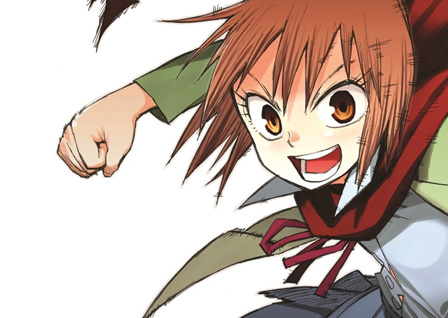
Lucifer And The Biscuit Hammer
Satoshi Mizukami
5 vols
Seven Seas
ISBN: 1626920850 (Amazon)
With Mizukami's bizarre and kind of wonderful Planet With airing currently to minor acclaim, it might be a good time to focus on the first of his mange to find [official] US localization. First hitting Crunchyroll as the bizarrely titled The Lucifer And Biscuit Hammer (making it sound like the hammer was of a Lucifer-and-biscuit sort) and then receiving a better translation and production from Seven Seas, Lucifer And The Biscuit Hammer is a small taste of Mizakami's rollicking sense of weirdness - by which he takes common shonen tropes and twists them *just* enough to give them life and show the creator's awareness of the demographic he largely serves.
Lucifer And The Biscuit Hammer posits a world-ending crisis: the titular gargantuan biscuit hammer that floats above the earth, threatening to imminently destroy the world. The book posits a chosen hero from non-heroic cloth: Yuuhi, a college student who promptly declines his destiny and is happy to let the world be destroyed. Mizukami posits the princess he's bound to serve: Samidare, a next-door neighbour who wants the hero's help stopping the biscuit hammer because if anyone is going to destroy the earth then dammit it's got to be her. The whole thing is kind of fun and nuts as Yuuhi and Samidare gleefully plot the destruction of the world while everyone else on their side focuses on stopping the Biscuit Hammer from accomplishing the very same thing.
It's a largely fun and wacky series with some big emotional moments. I found it completely enjoyable. Mizukami is kind of a minor treasure and I hope more of his work will land in the US (currently we have Lucifer And The Biscuit Hammer and the probably even better Spirit Circle along with the ongoing serialization of a comics adaptation of Planet With).
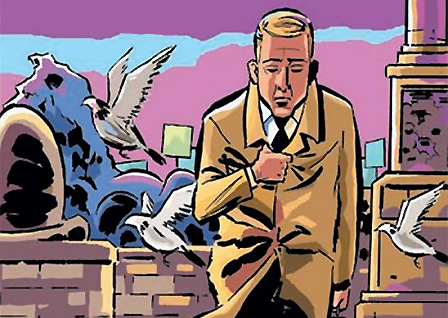
The Birthday Riots
Nabiel Kanan
60 pages
NBM
ISBN: 1561632996 (Amazon)
This one's about fifteen years old, but it still reads well. Max is a former activist professor who's traded his principles for a more comfortable life. Wife, kids, and he live in the countryside and he's employed by London's mayor, where he can ostensibly make a difference but really just aids the machine.
Things start to fall apart a little though. A former star pupil who lionized him is in prison on hunger strike. His employer is about to push legislation to prevent gypsies from being able to set up on land. His daughter begins to think he's a fraud. And he begins to believe her.
It's a largely quiet, well-observed work that maybe suffers a little in its climax but maybe it doesn't. In any case, it's worth looking up if you're unfamiliar with many of the serious non-genre comics that came out in the early days of reliably good graphic novels (the number of good and great books coming out annually now is mind-blowing compared to what was available in, say, 2001).

Monet: Itinerant Of Light
Salva Rubio and EFA
112 pages
NBM
ISBN: 1681121395 (Amazon)
NBM, like SelfMadeHero, has been for the last several years been putting out these fantastic graphic novel biographies. Last year they released a Glenn Gould biography that, for me, set the gold standard for what comics can achieve when it comes to biography. Monet: Itinerant Of Light is no Glenn Gould: A Life Off Tempo, but it is still very good. Efa illustrates in a style not impressionistic but one that evokes the impressionism of the subject—and many of his panels and scenes are drawn from Monet's body of work (by way of inspiration rather than swiping). It's a good story and a sad story (sad, as most biographies must be).
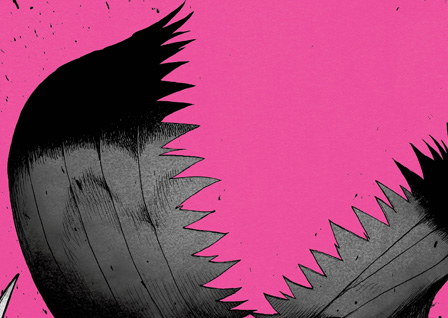
AJIN: Demi-Human
Gamon Sakurai
9+ vols
Vertical
ISBN: 1939130840 (Amazon)
Gamon Sakurai’s created a world in which a rare subsection of the populace is functionally immortal. By volume 6, the series lead has died (often gruesomely) well over a hundred times. These demis have been living largely in secret for decades, camouflaged as normal humans. Rumours of their existence flit through society, but most people are pretty sure it’s all a hoax. A few volumes in, a war erupts between a group of demi-humans and the Japanese government, leaving probably few who doubt the existence of the demis.
Demi-humans, in addition to resurrecting over and over and over again, manifest a strange shadowy ghost figure that looks like some sort of clawed, oozing mummy. Each demi’s manifestation is slightly different based on practice and focus. These ghosts, while invisible to non-demis, maintain very real interactions with the physical world and can kill and destroy with little trouble. There are a number of weaknesses and strange properties to the ghosts that are gradually revealed through the series, and Sakurai makes wonderful use of those fragilities.
It’s a thrilling ride and I’ve been comparing it to the clever excitement of Death Note. There’s some fantastic cat-and-mouse going on here, and Sakurai keeps things fresh by coming up with new ways to utilize the same basic set of powers. I not infrequently found myself smiling at the ingenious way the creator chose to get his characters into and out of scrapes.

Master Keaton
Naoki Urasawa and Takashi Nagasaki
12 vols
VIZ
ISBN: 1421575892 (Amazon)
A few years ago, I gave Master Keaton a shot (three vols worth), but it didn't click with me. I'm a big fan of Urasawa and the stories were fine and all, but there was no enduring narrative. A reader could start anywhere and read another Master Keaton yarns and leave entirely satisfied. It's like reading those short Hercule Poirot mysteries in that one story doesn't inform the next story. There was no over-arching direction for the book.
Seeing that the series wrapped in 2017, I thought I'd binge the whole thing in a fit of completionism. And largely, my opinion endured. Through vol 11, the series is comprised of short, unrelated mysteries and adventures. Kind of like watching MacGuyver. There were a couple recurring characters and occasional references to past cases, but not much. Then vol 12 hit and the whole thing is a volume-long culmination of the Keaton mythos, resolving so many of the things dangling around since vol 1. That was satisfying. What a nice little ride.
201–210211–220221–230231–240241–250
251–260261–270271–280281–290291–300
Good Ok Bad features reviews of comics, graphic novels, manga, et cetera using a rare and auspicious three-star rating system. Point systems are notoriously fiddly, so here it's been pared down to three simple possibilities:
3 Stars = Good
2 Stars = Ok
1 Star = Bad
I am Seth T. Hahne and these are my reviews.
Review copy submission may be facilitated via the Contact page.
Browse Reviews By
Other Features
- Popular Sections:
- Top 100
- Top 75 by Female Creators
- Kids Recommendations
- Daily Recommendations
- What I Read: A Reading Log
- Best Books of the Year:
- Top 75 of 2017
- Top 75 of 2016
- Top 75 of 2015
- Top 75 of 2014
- Top 35 of 2013
- Top 25 of 2012
- Top 10 of 2011
- Other Features:
- Why I ❤ Zita the Spacegirl
- 31 Days of Comics
- Bookclub Study Guides
- Sitemap



































































































